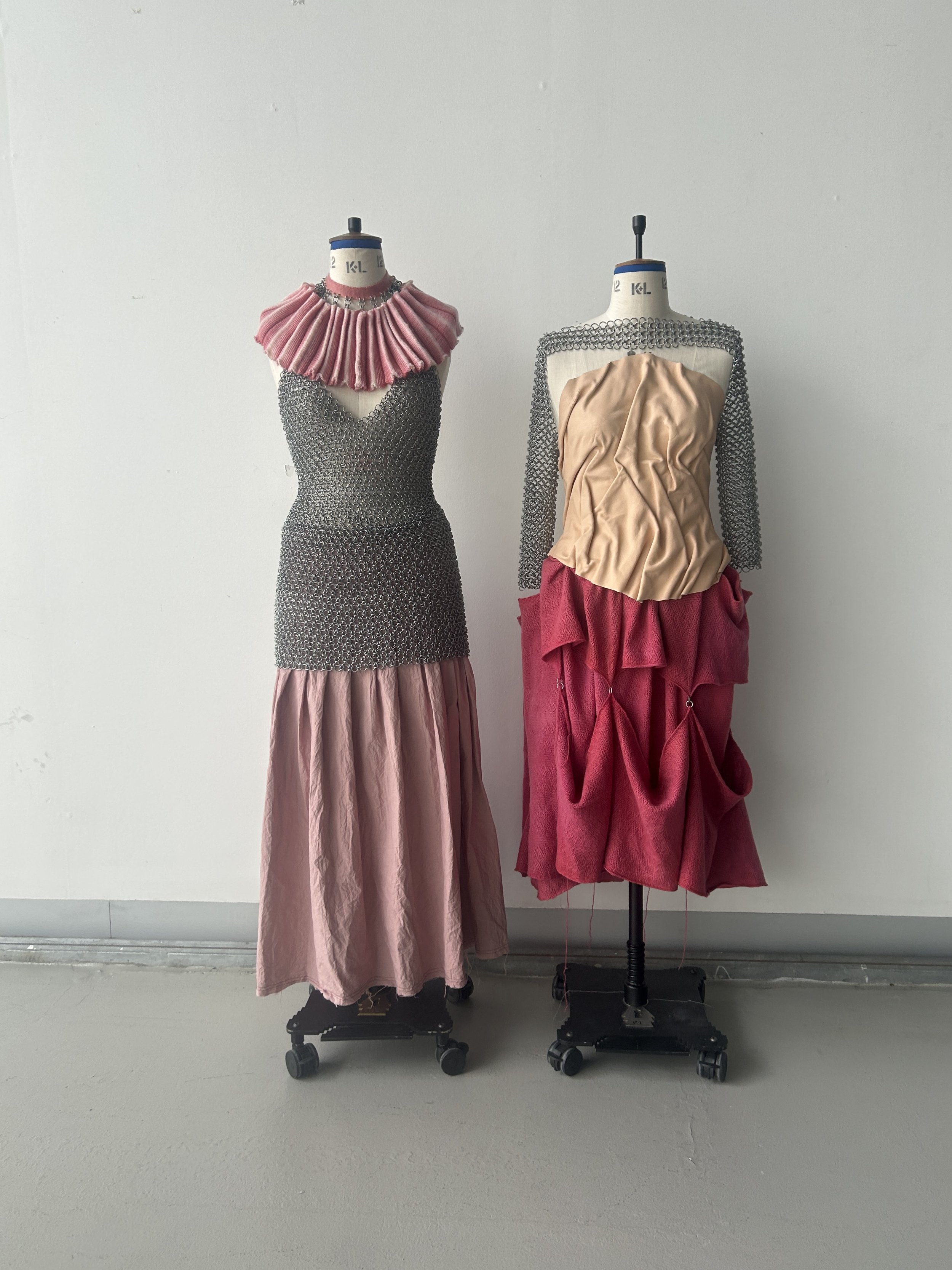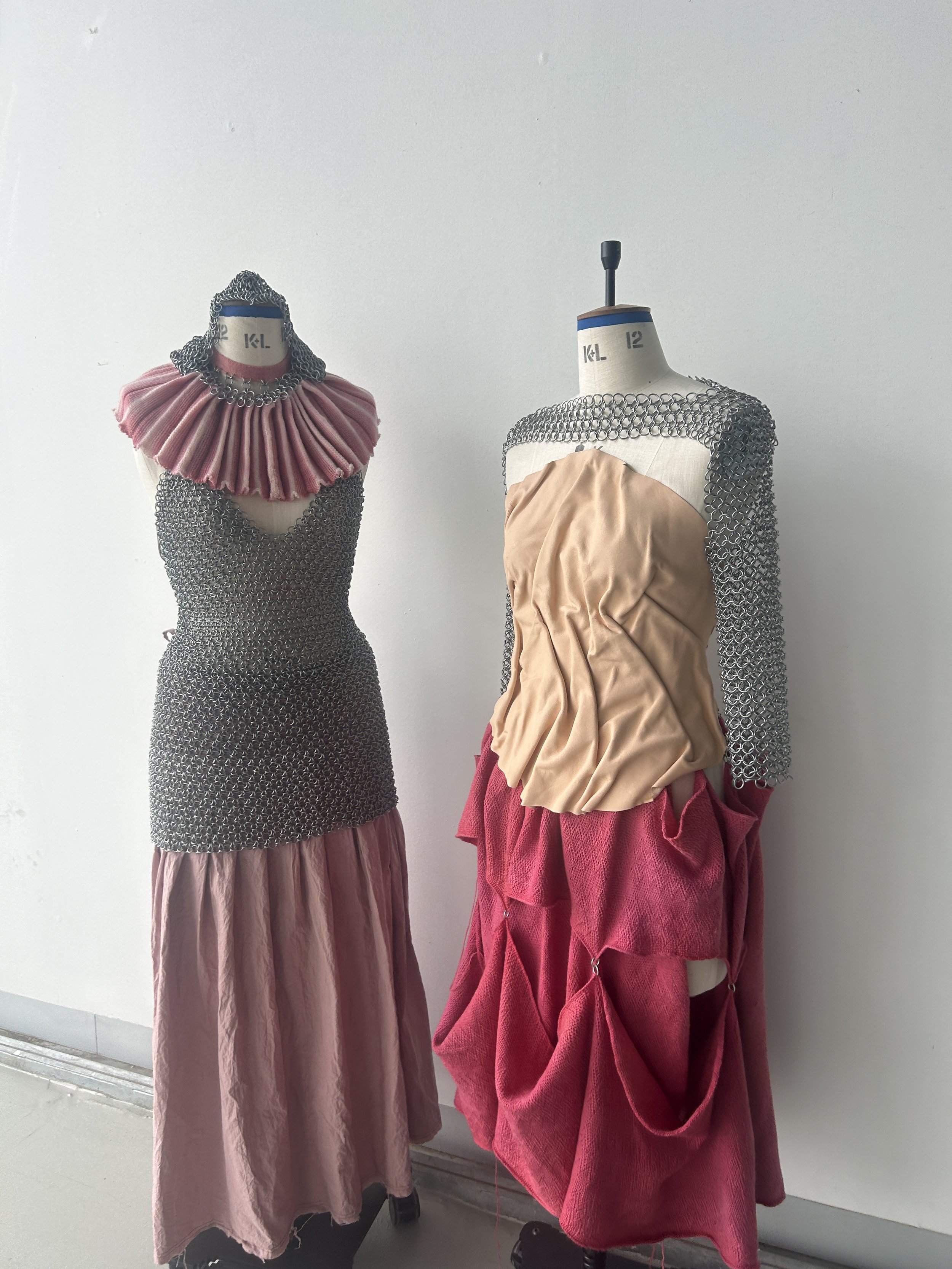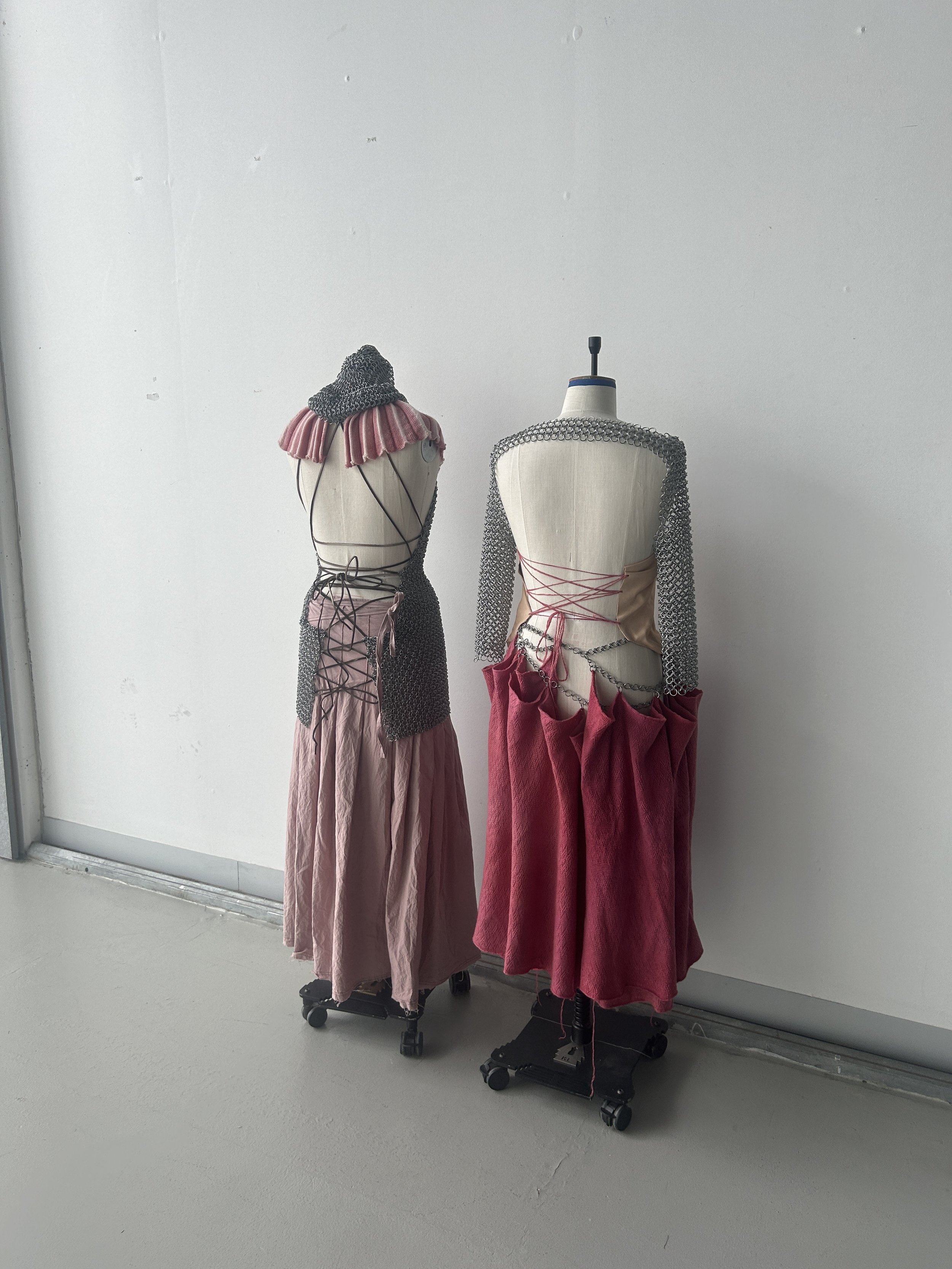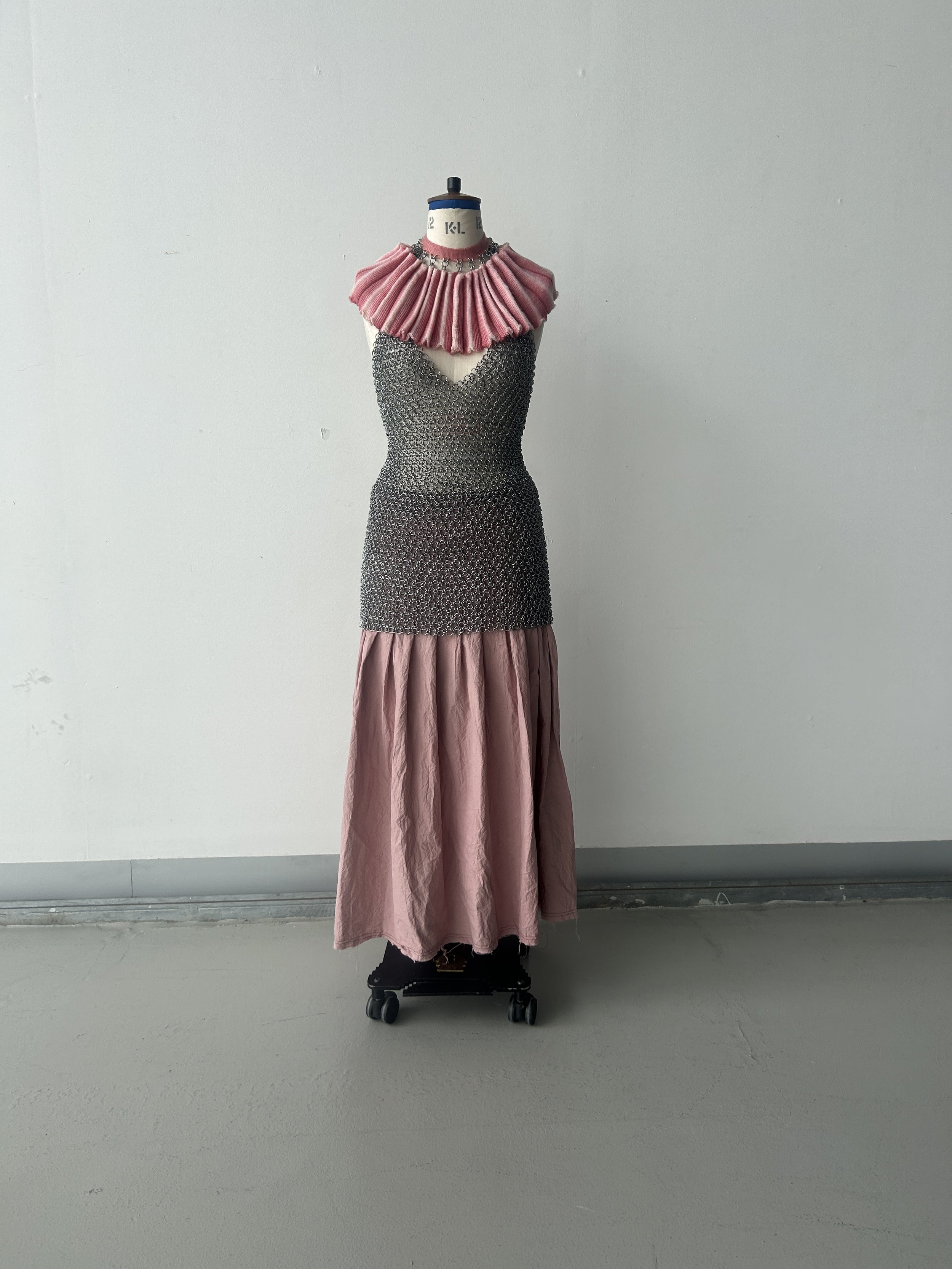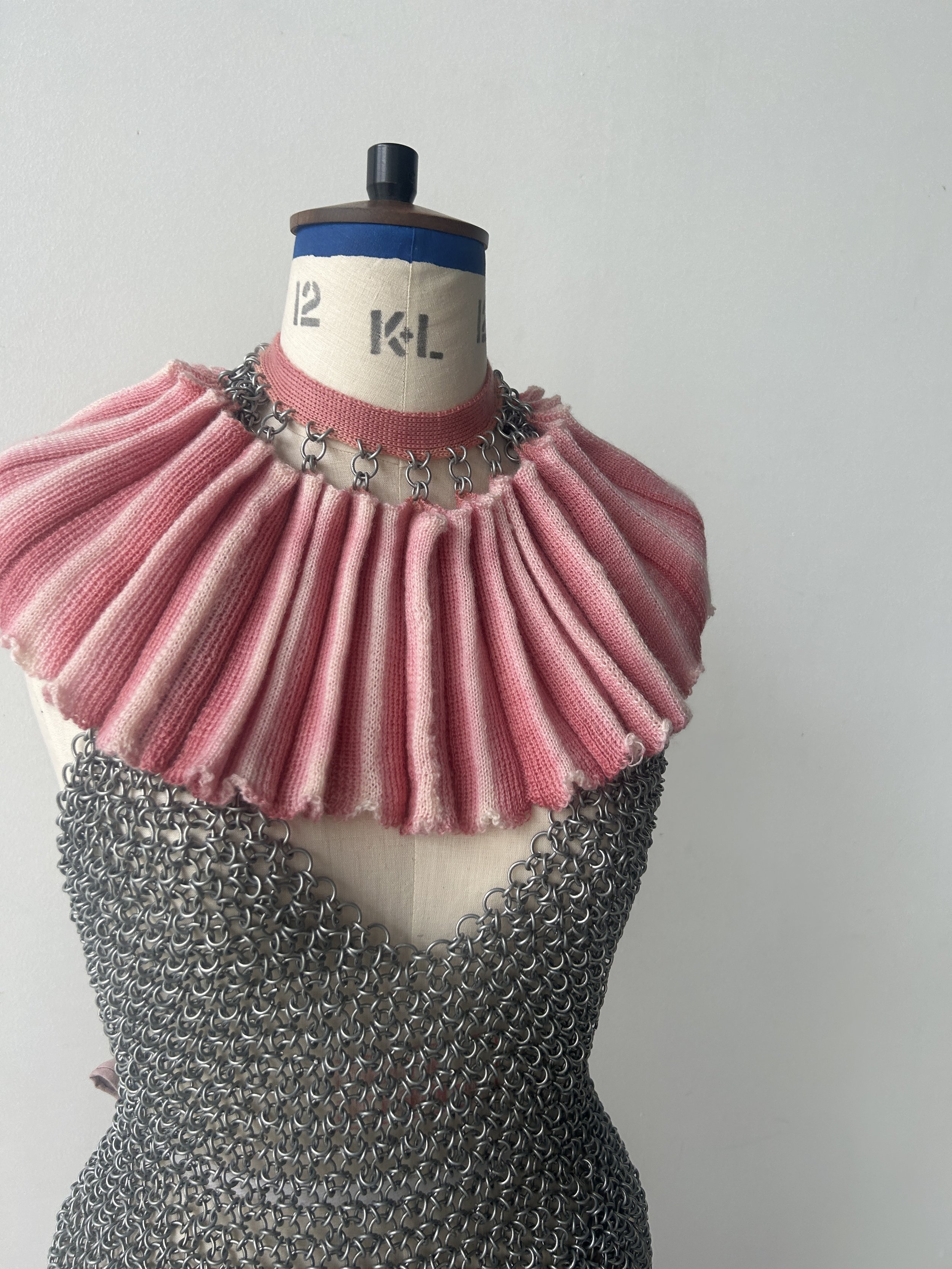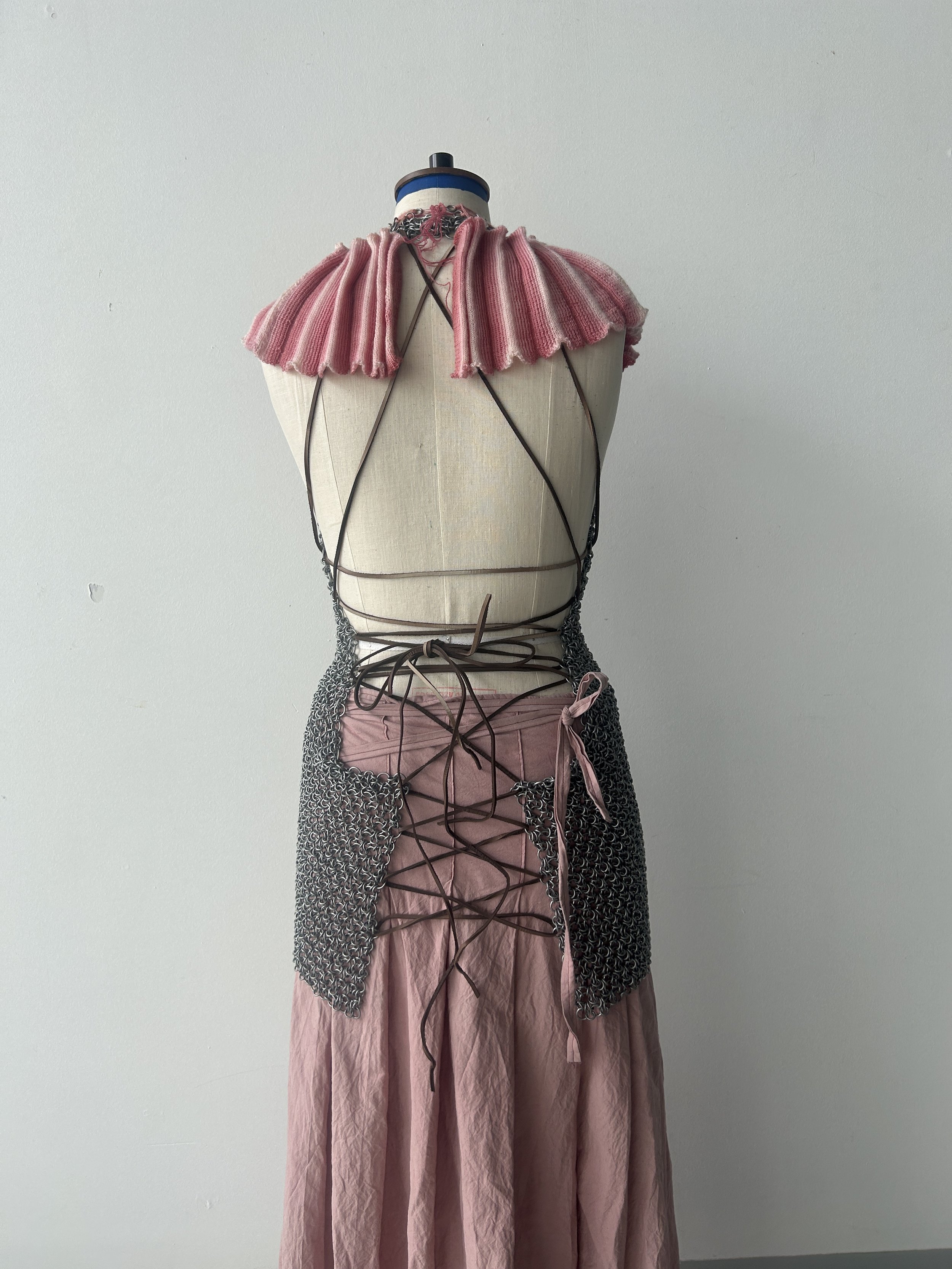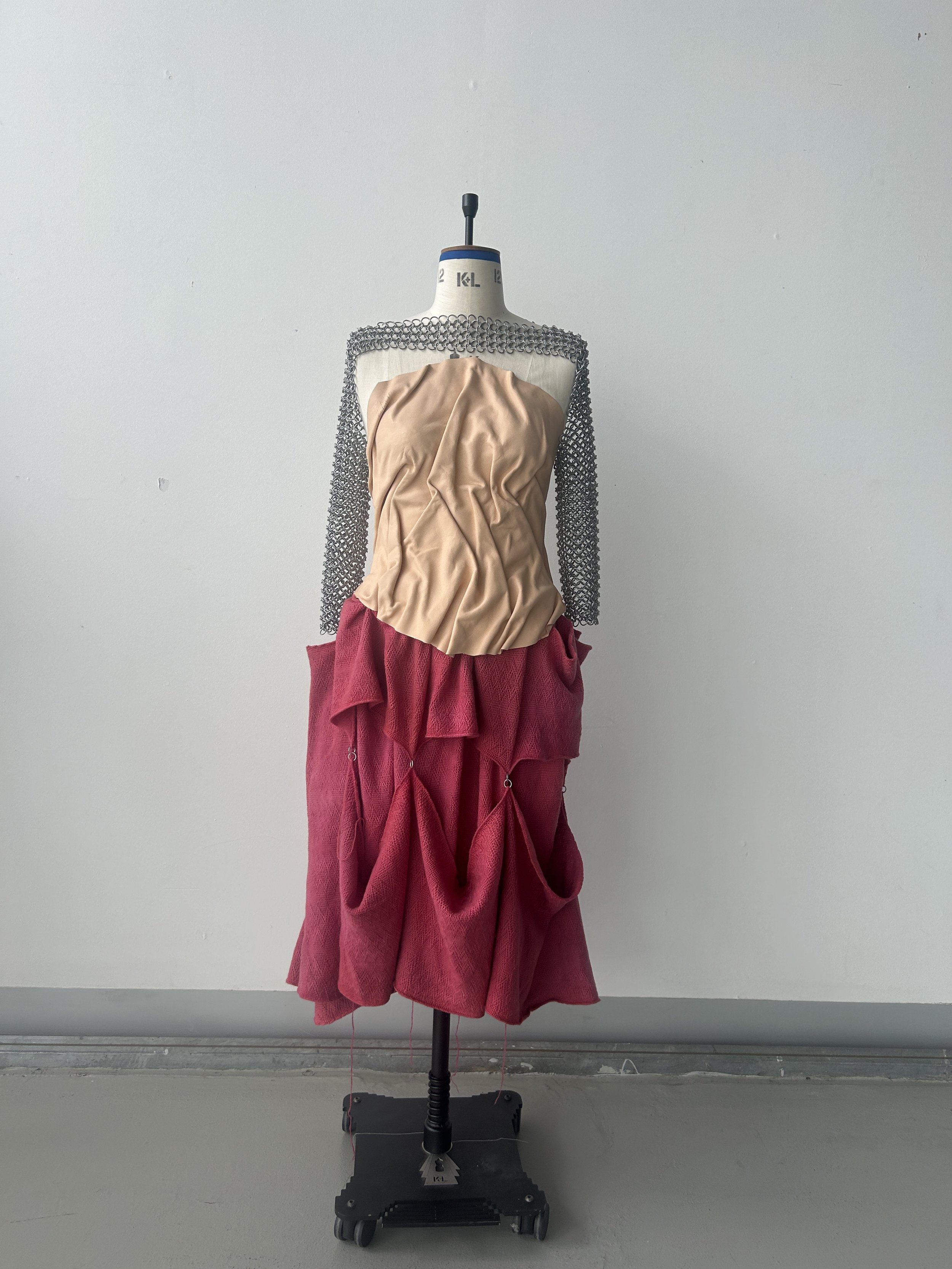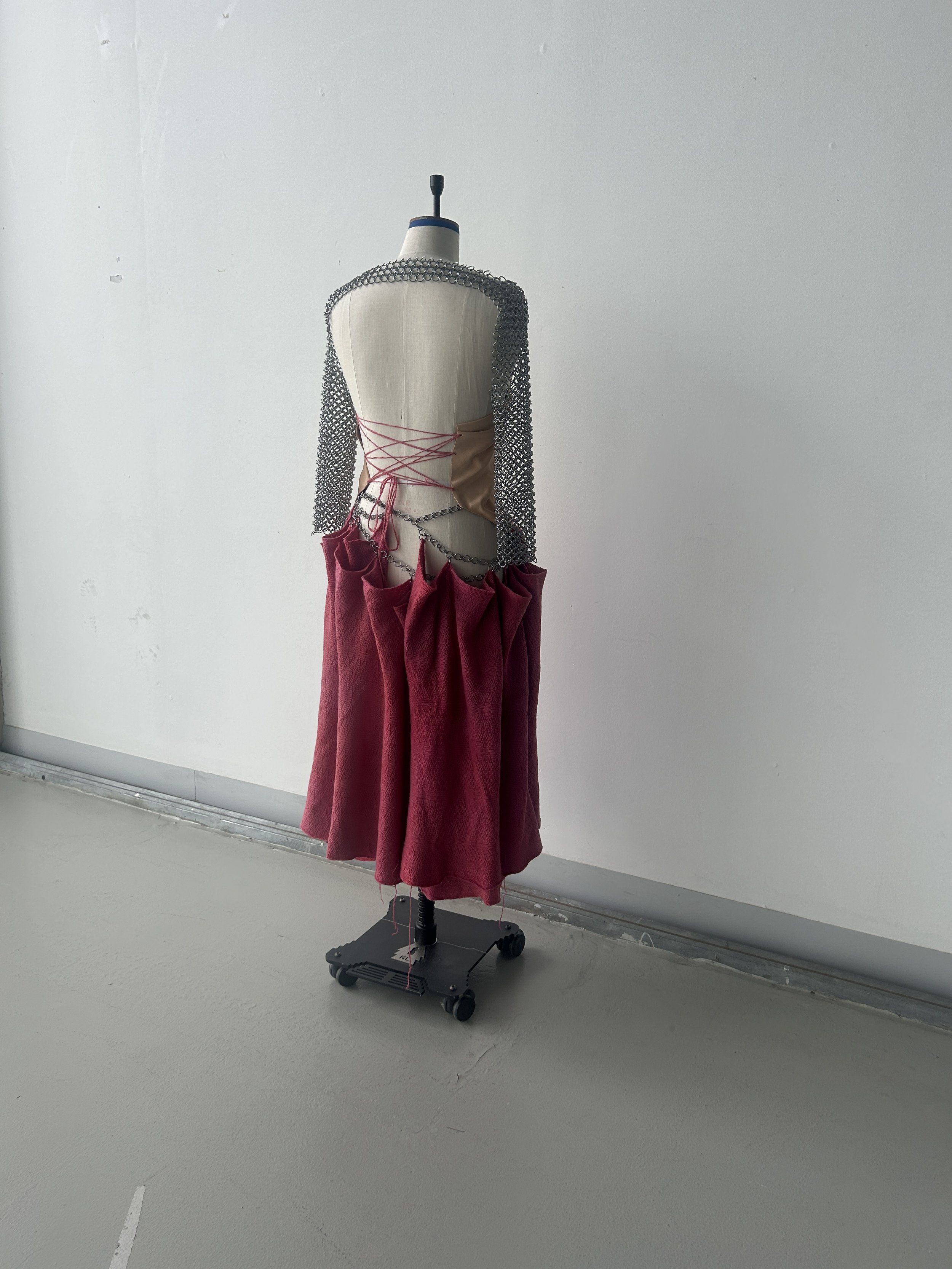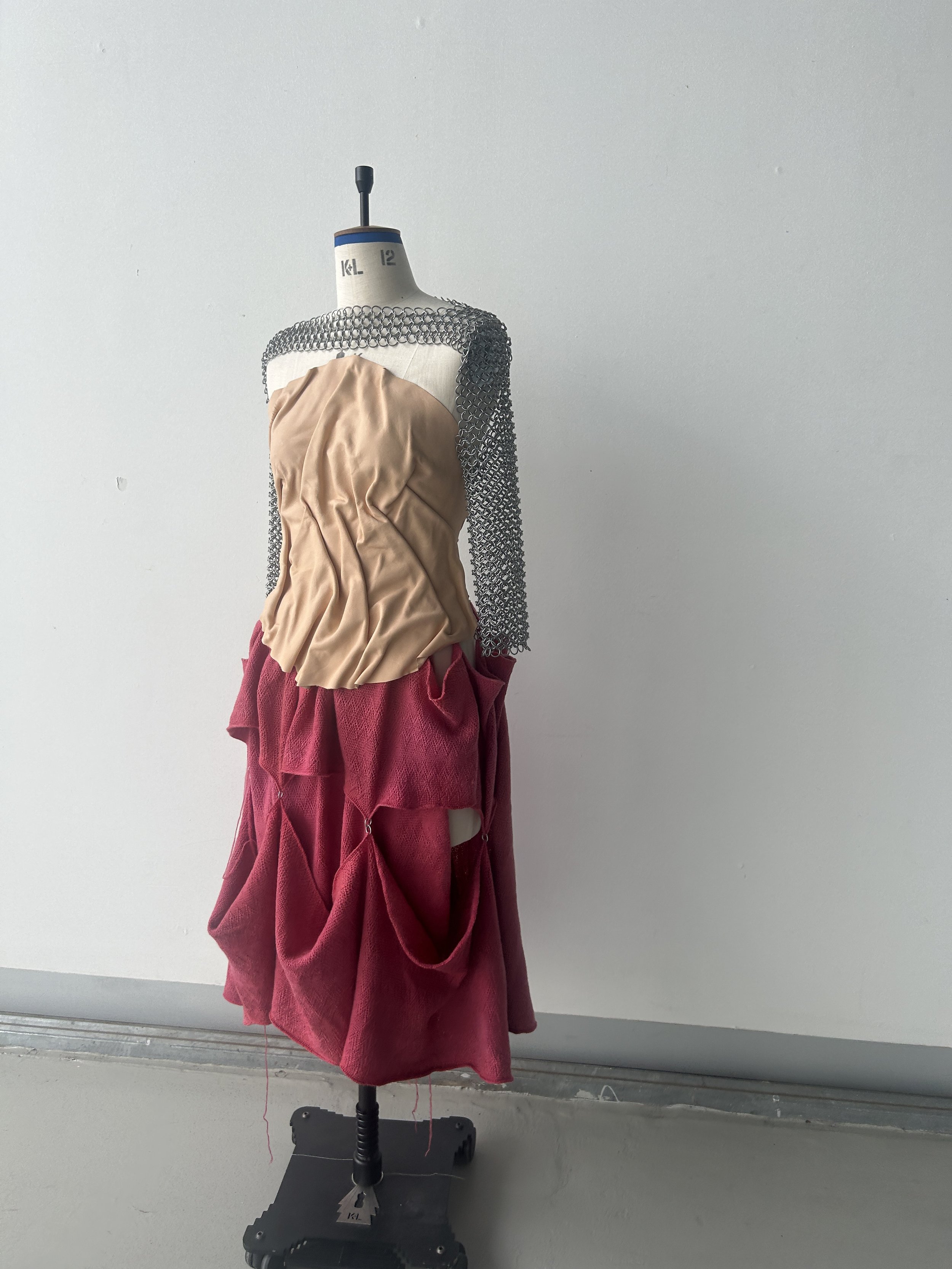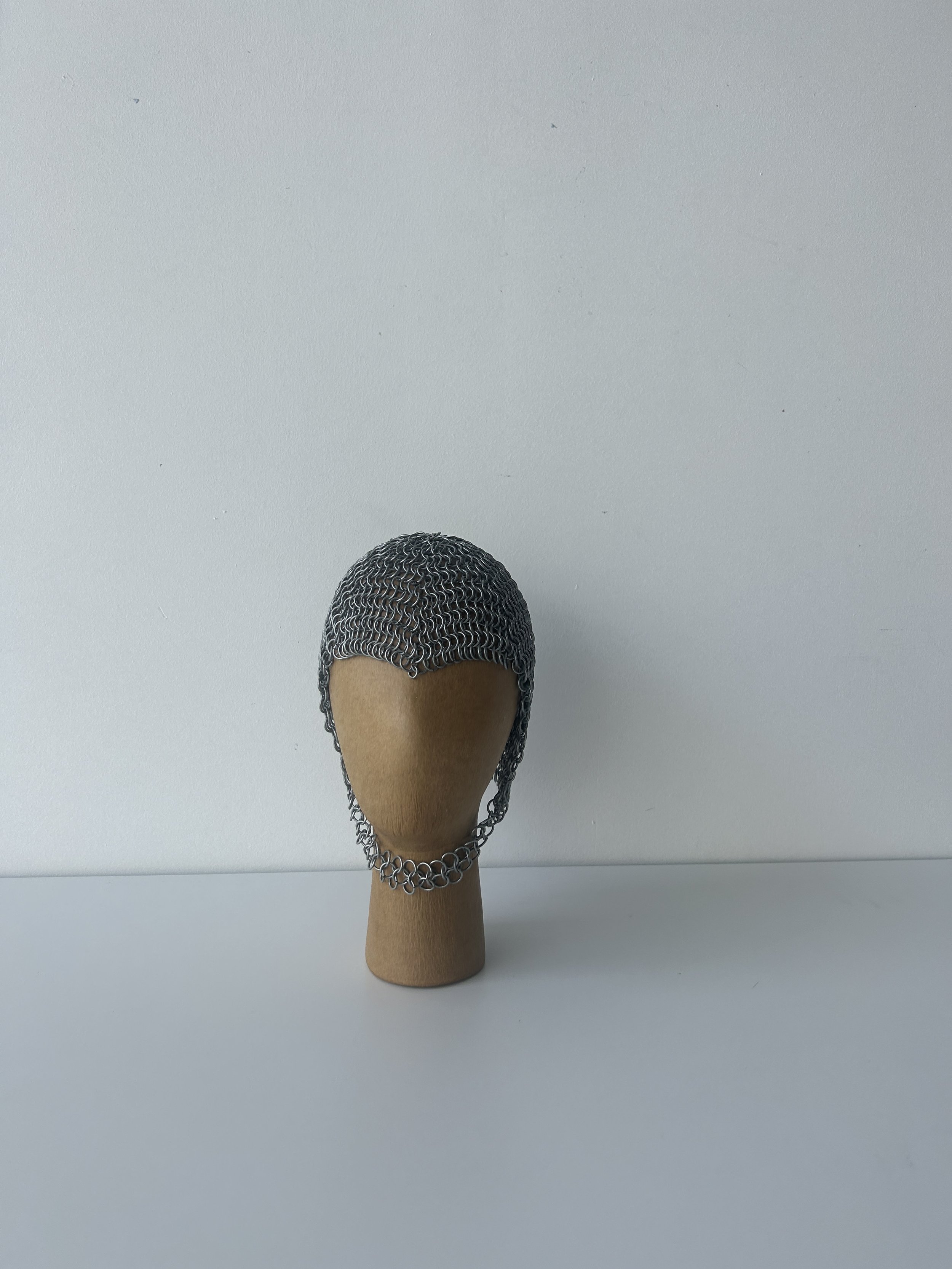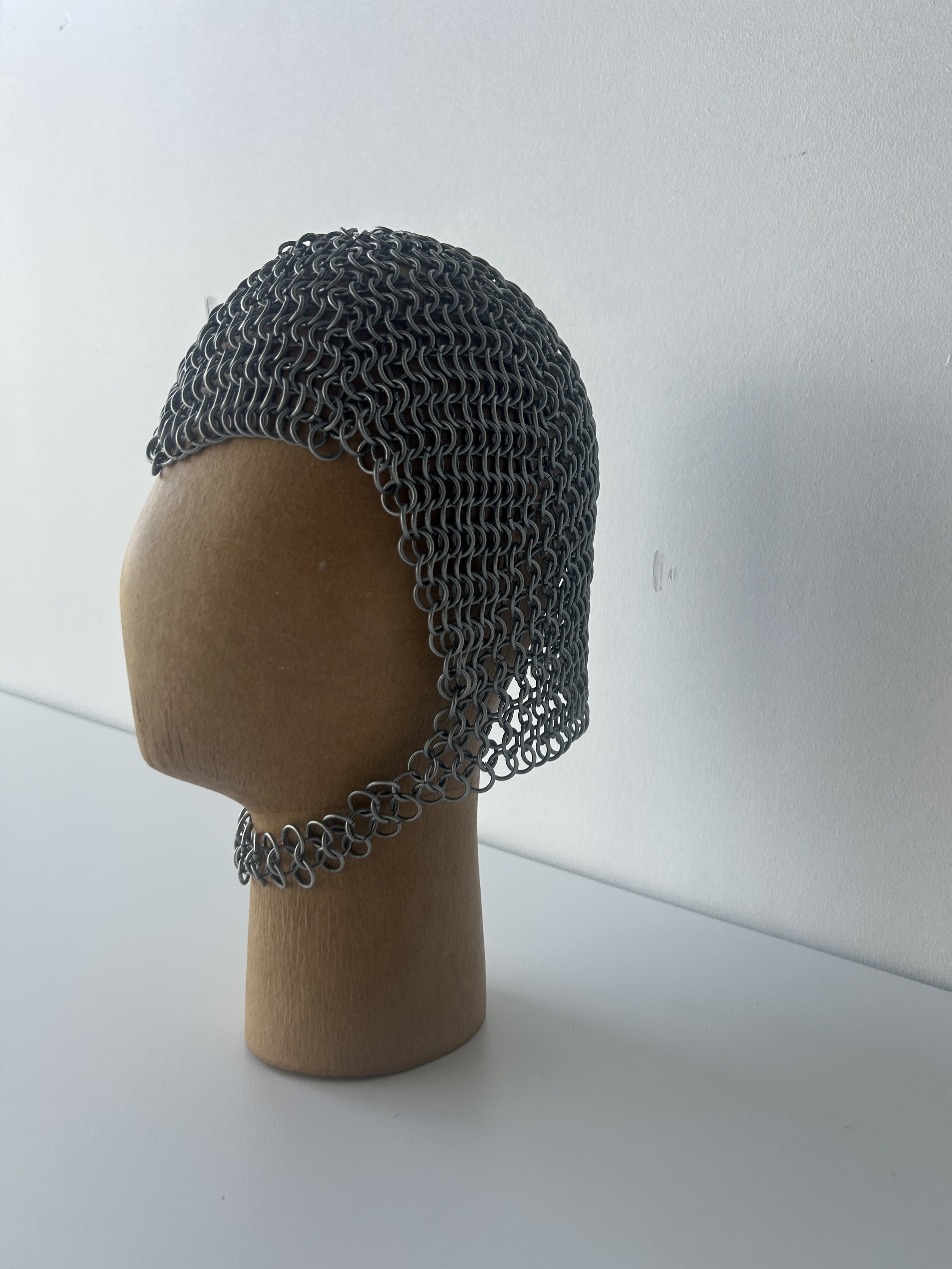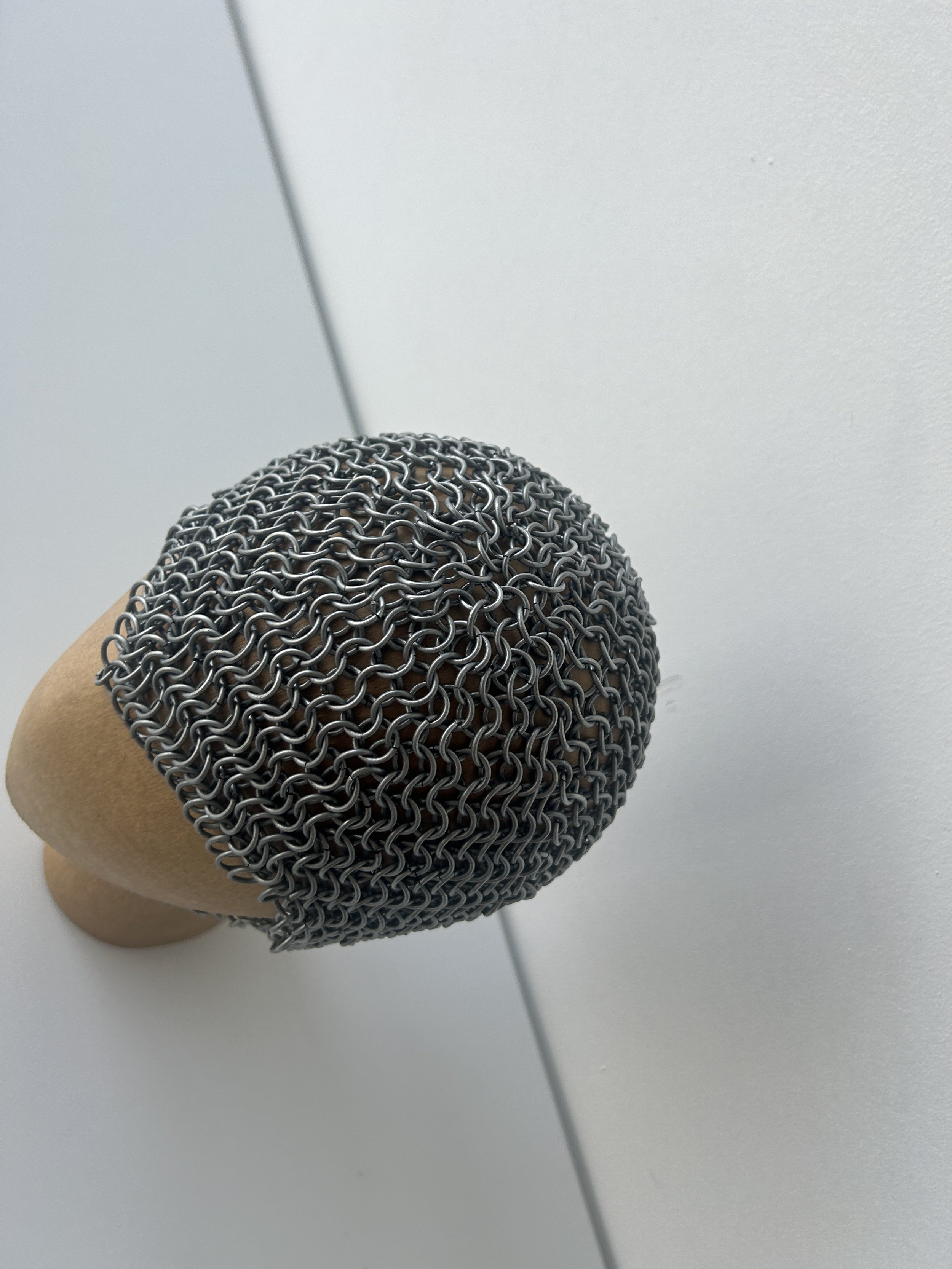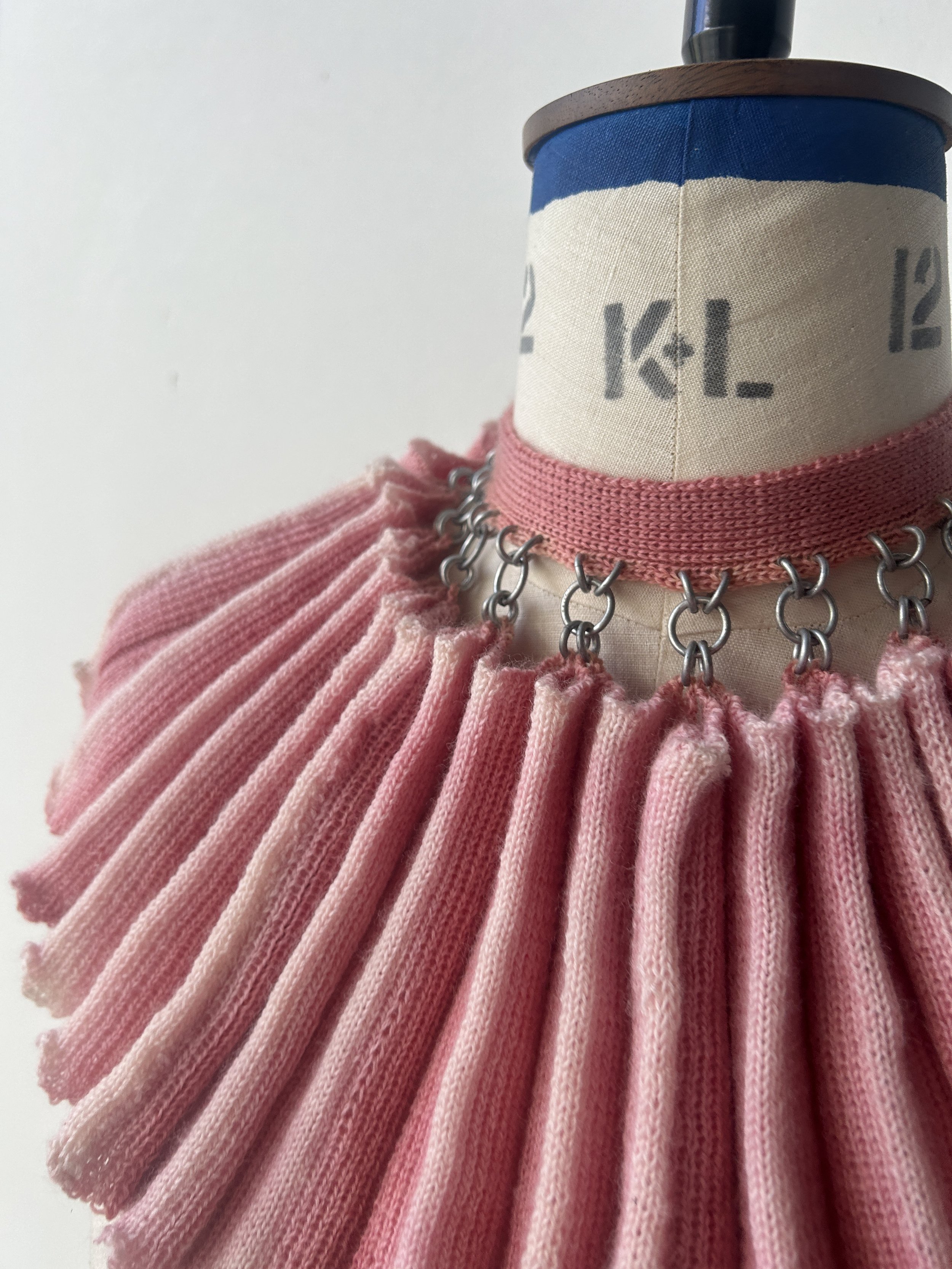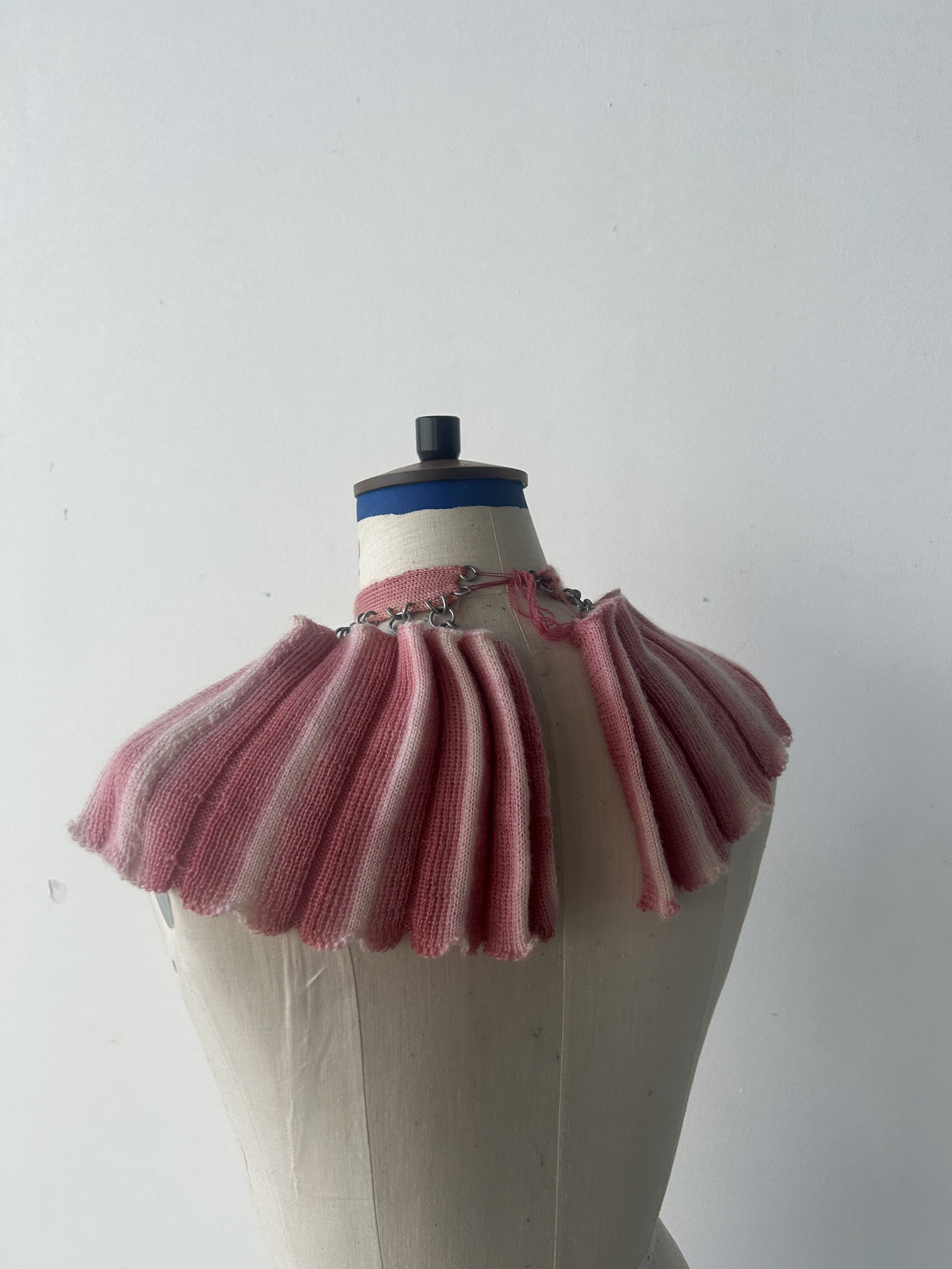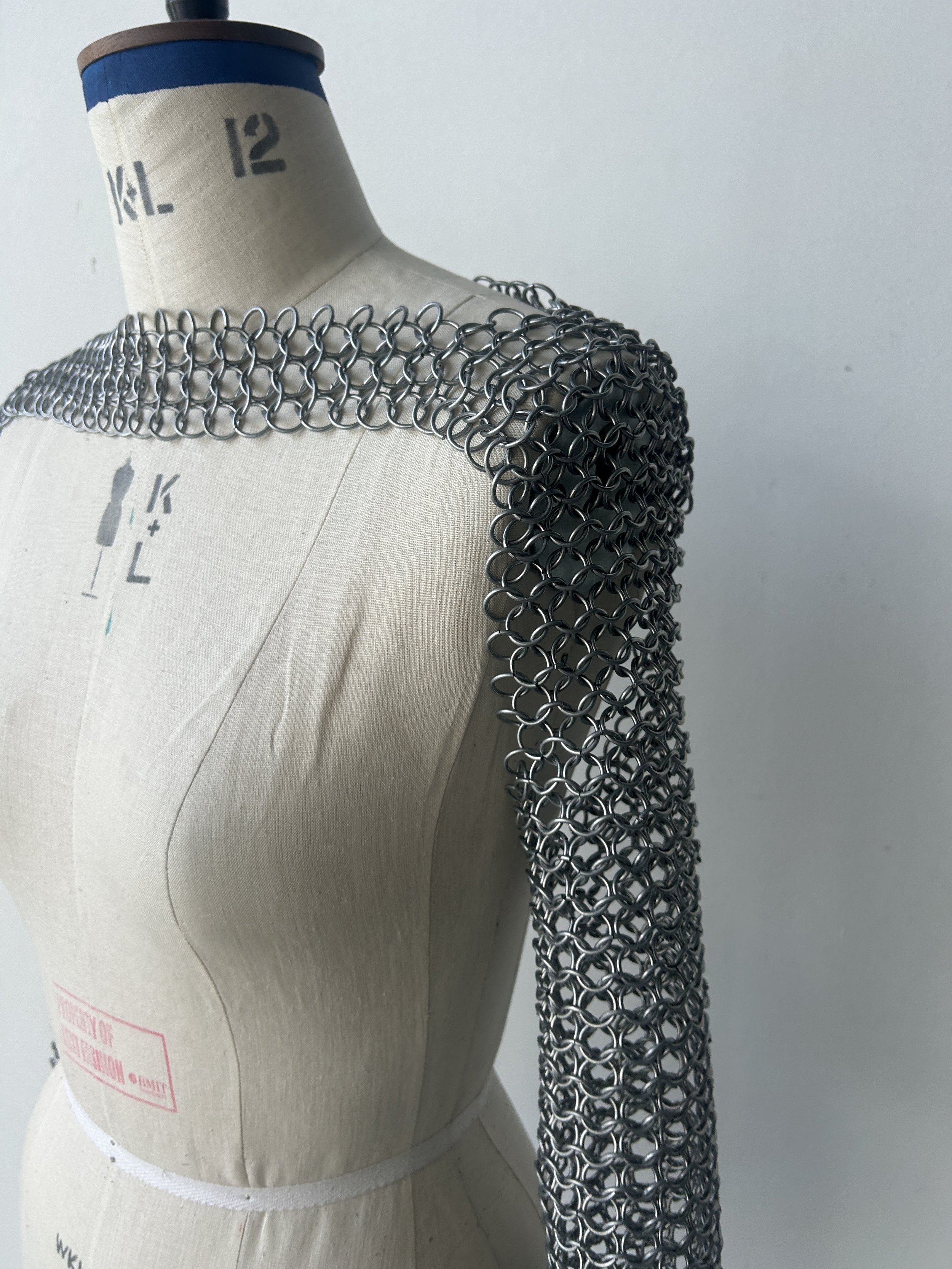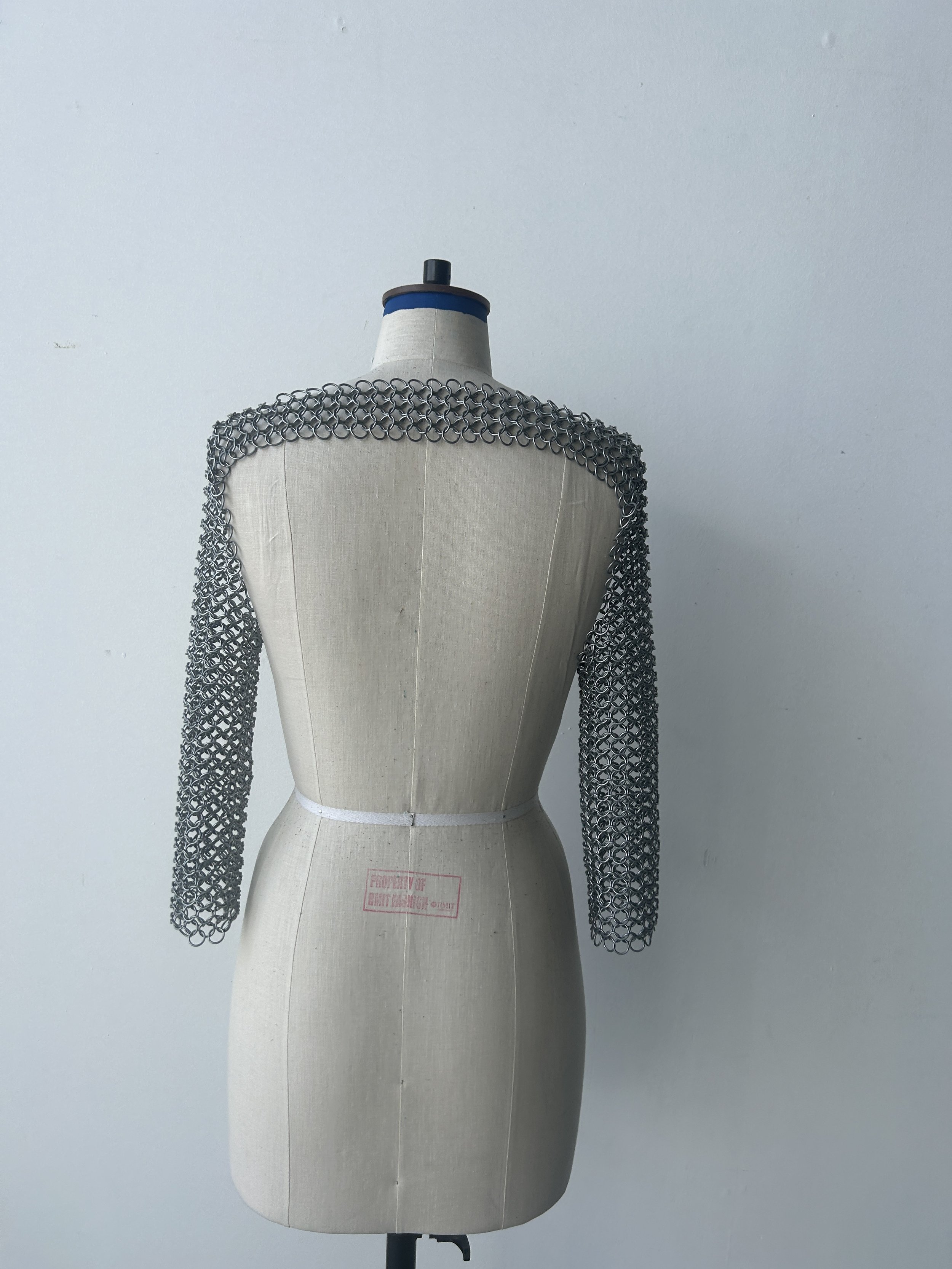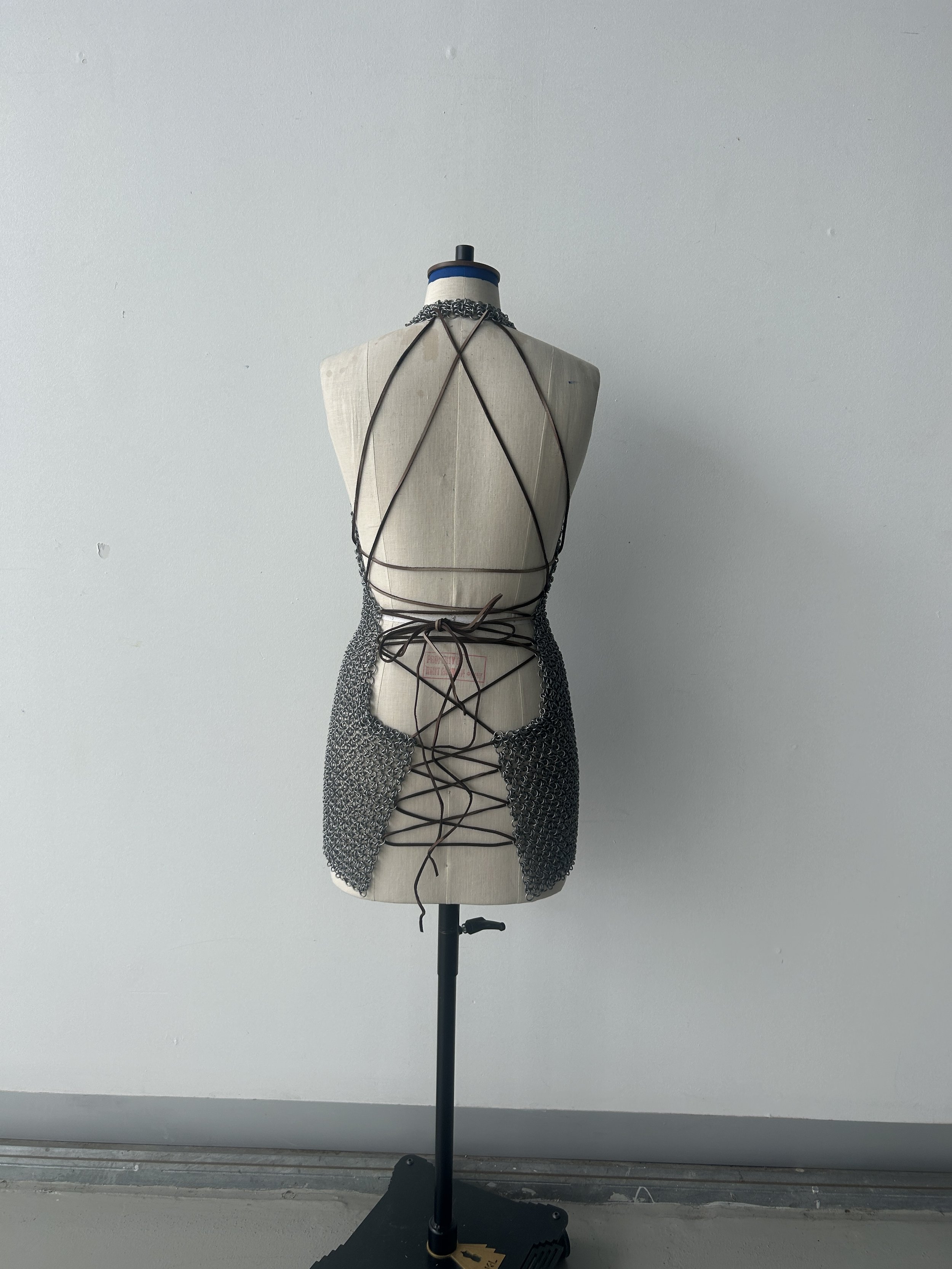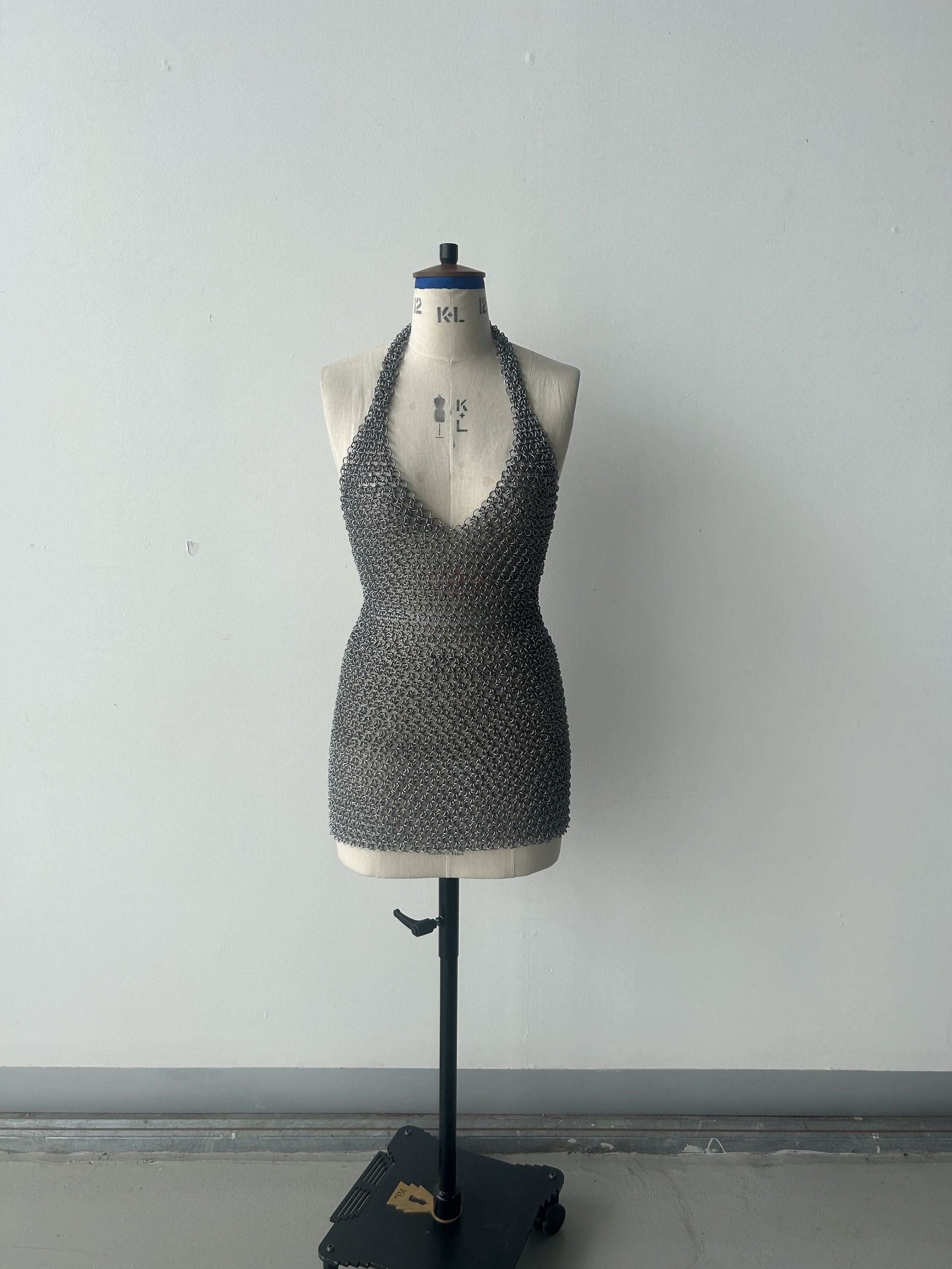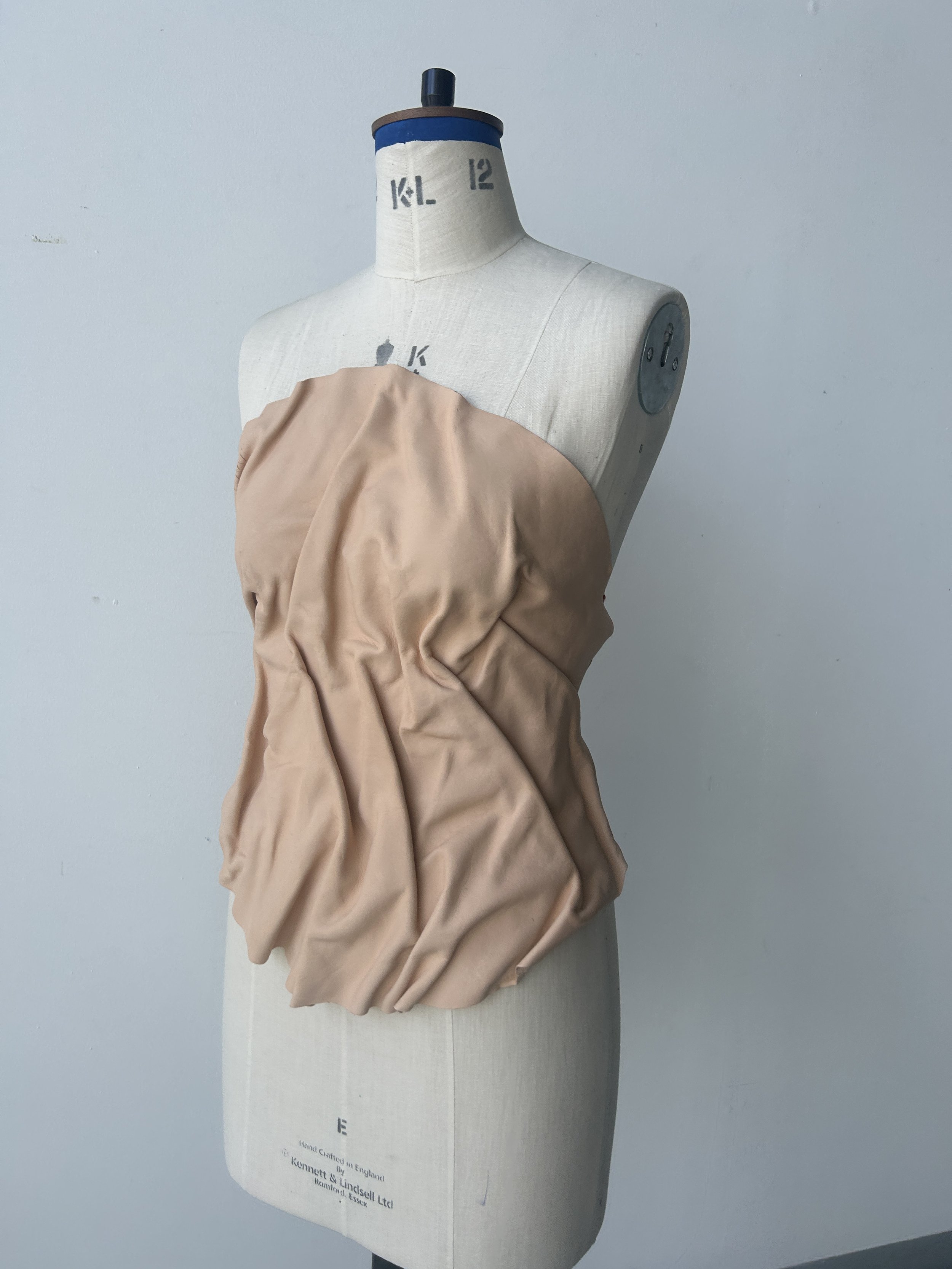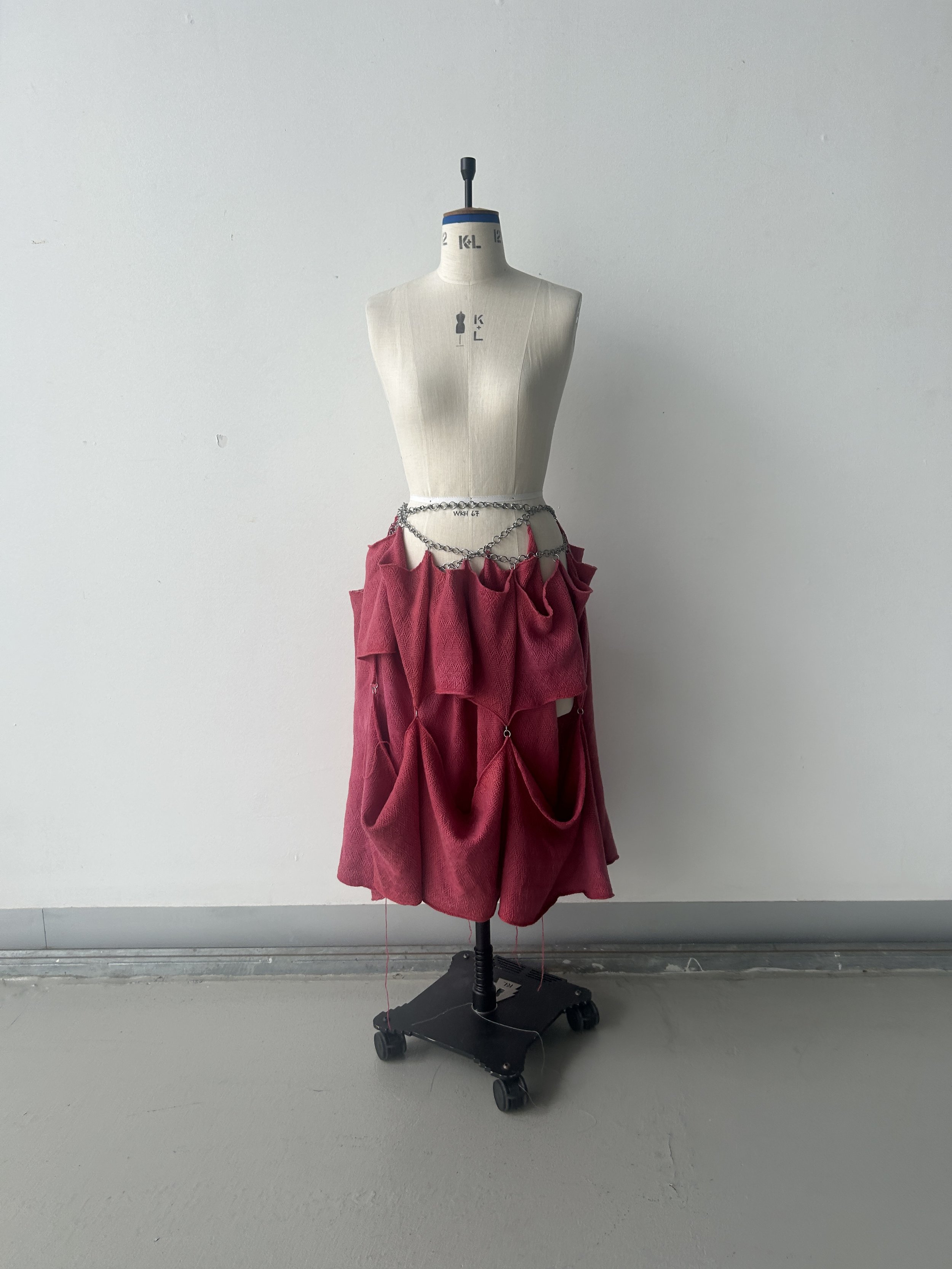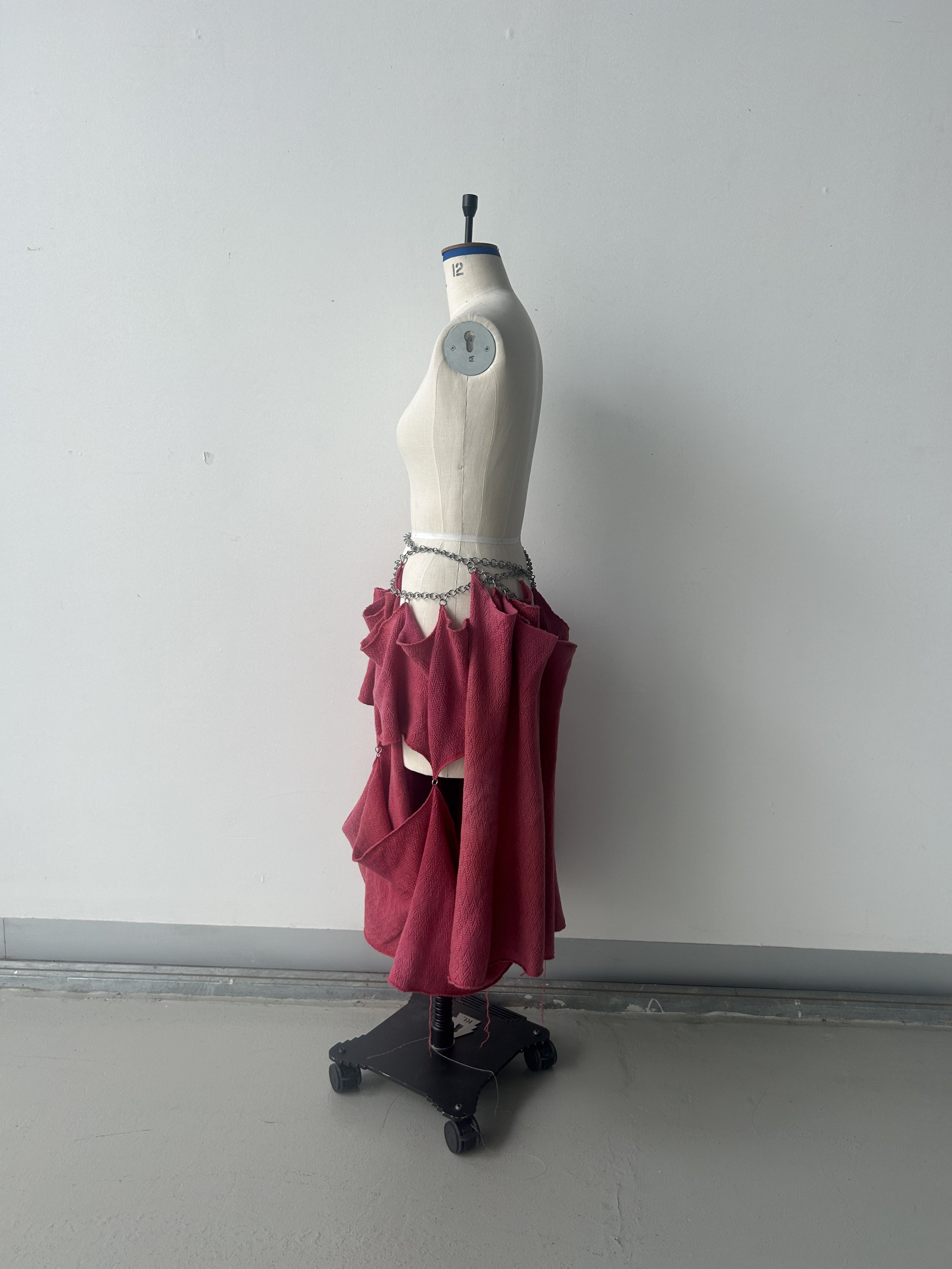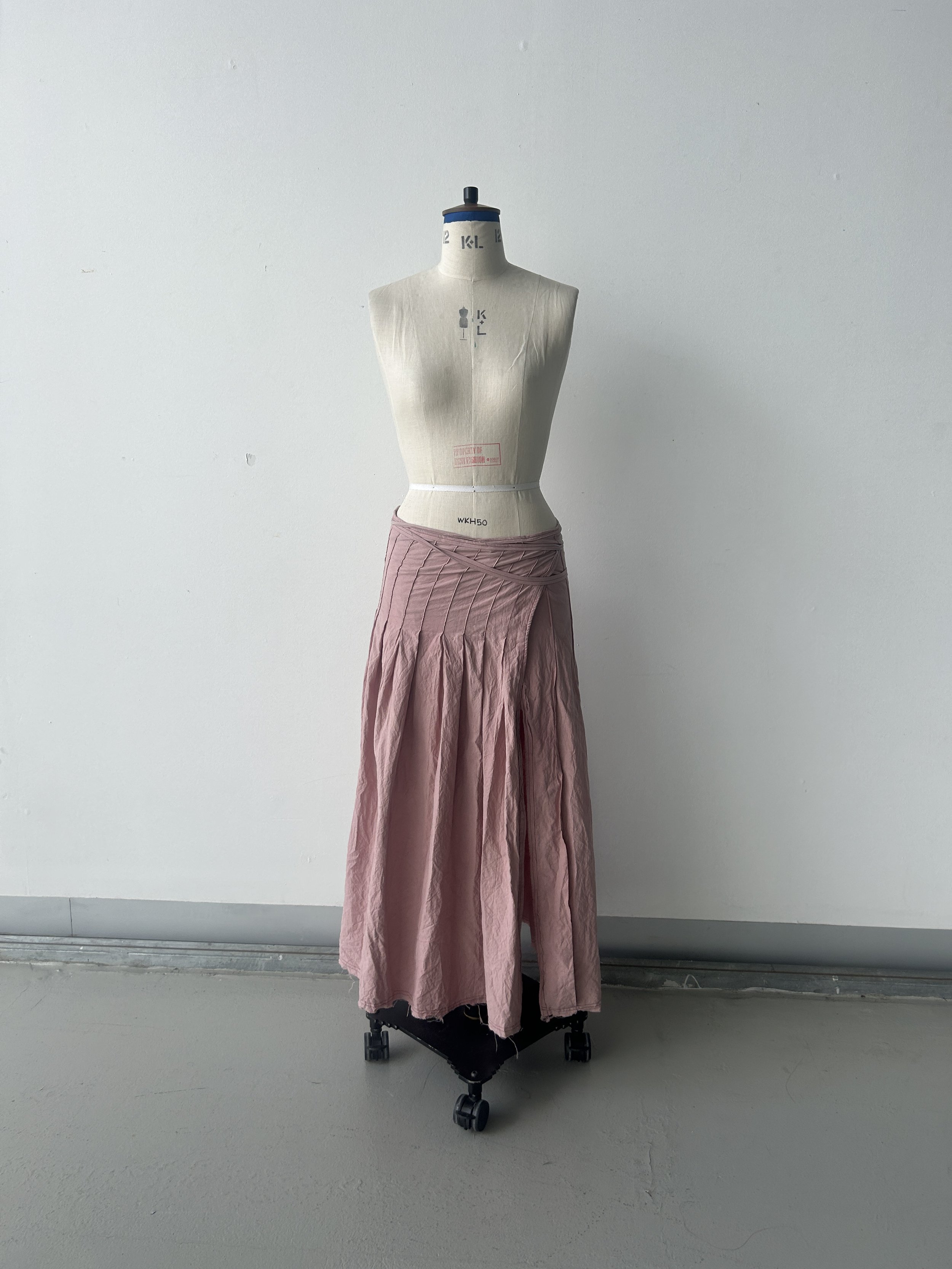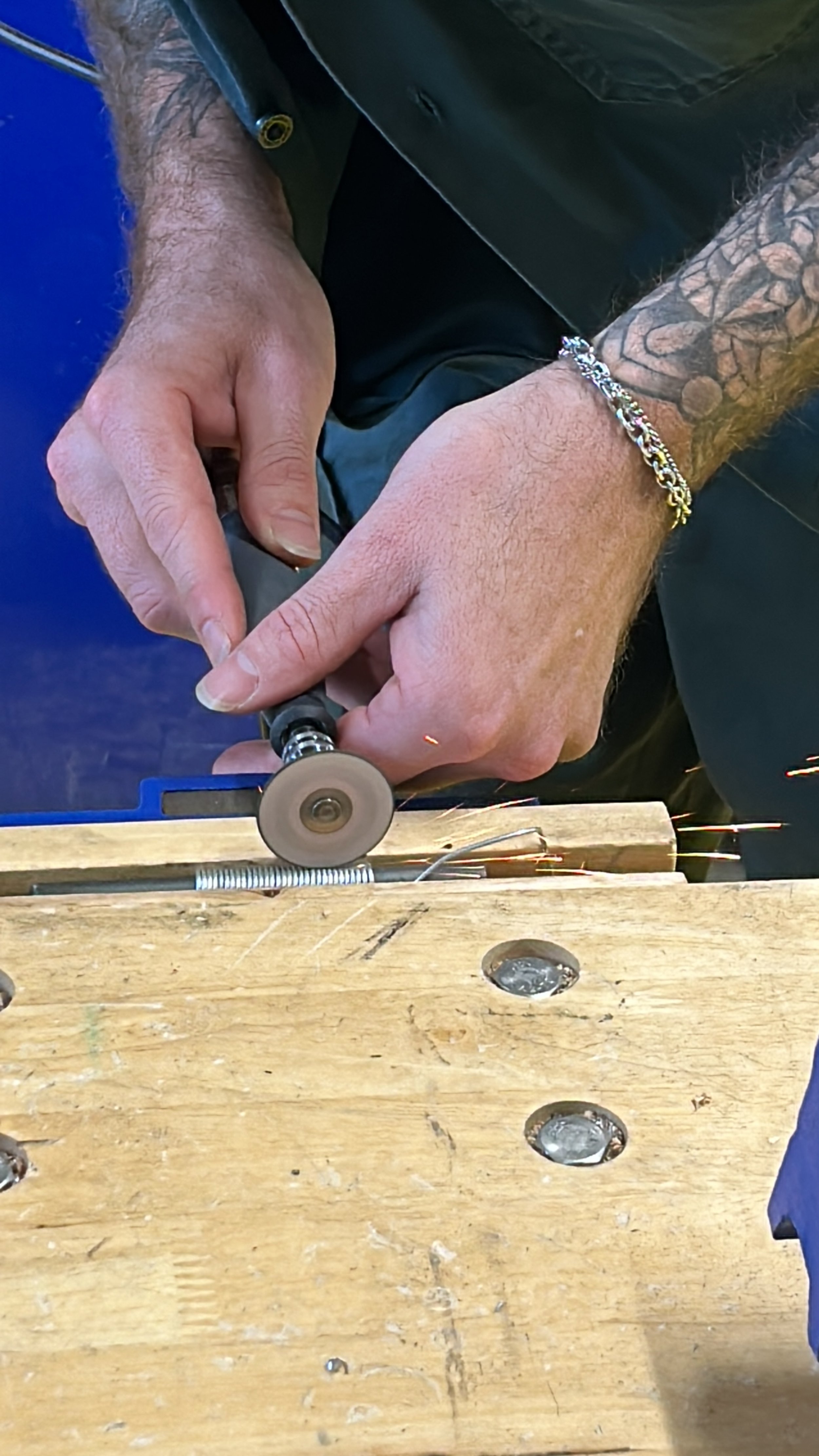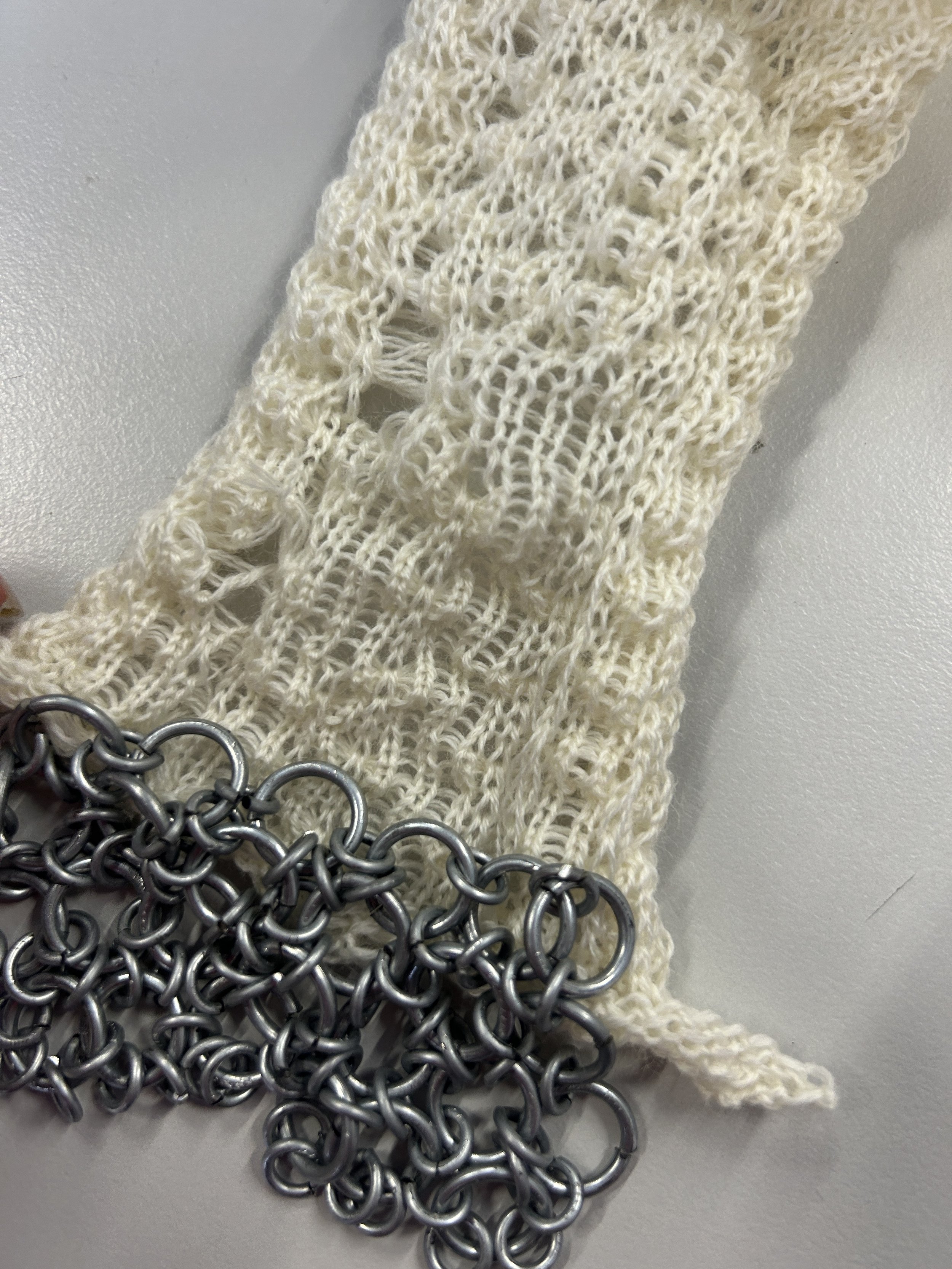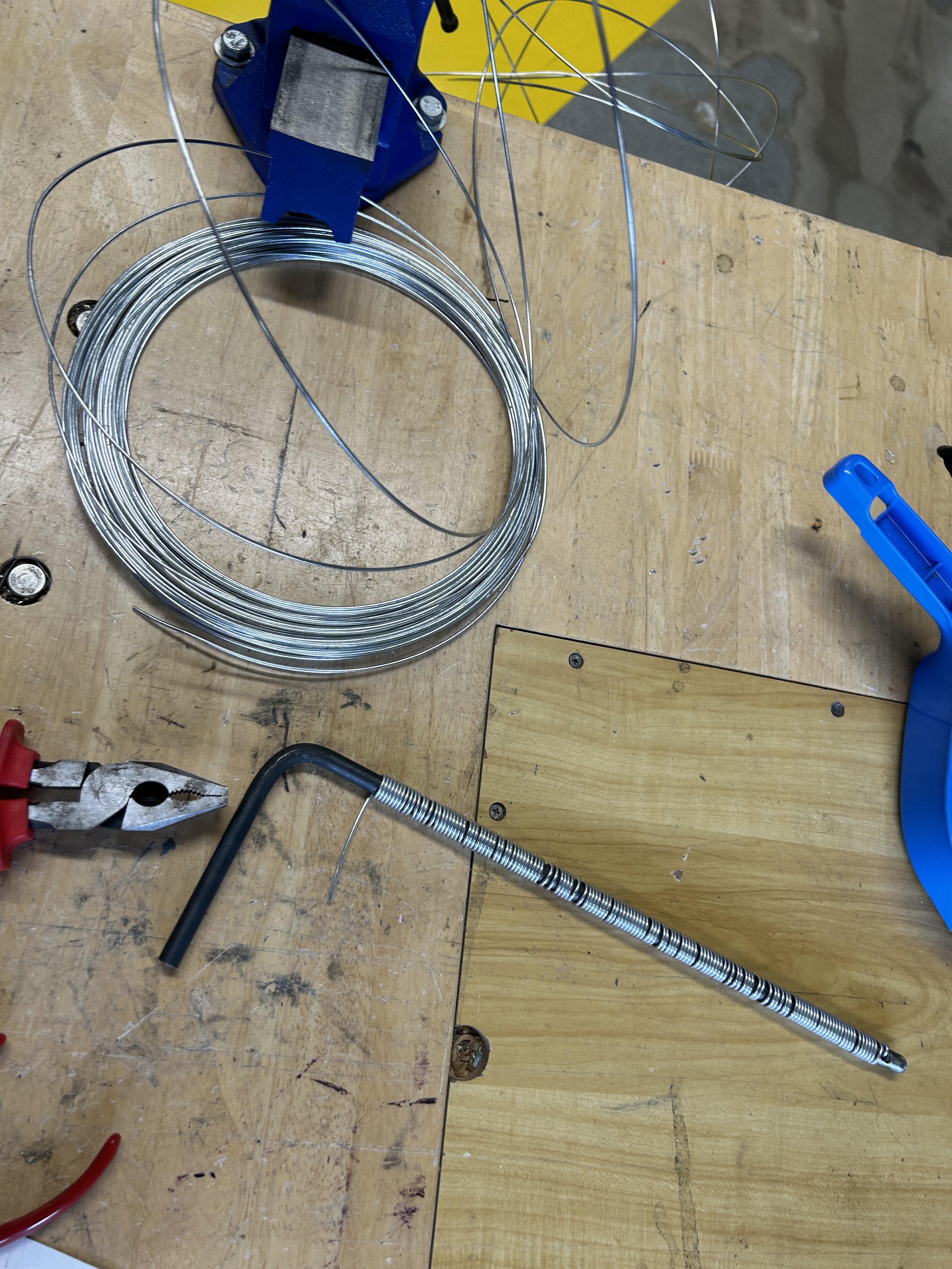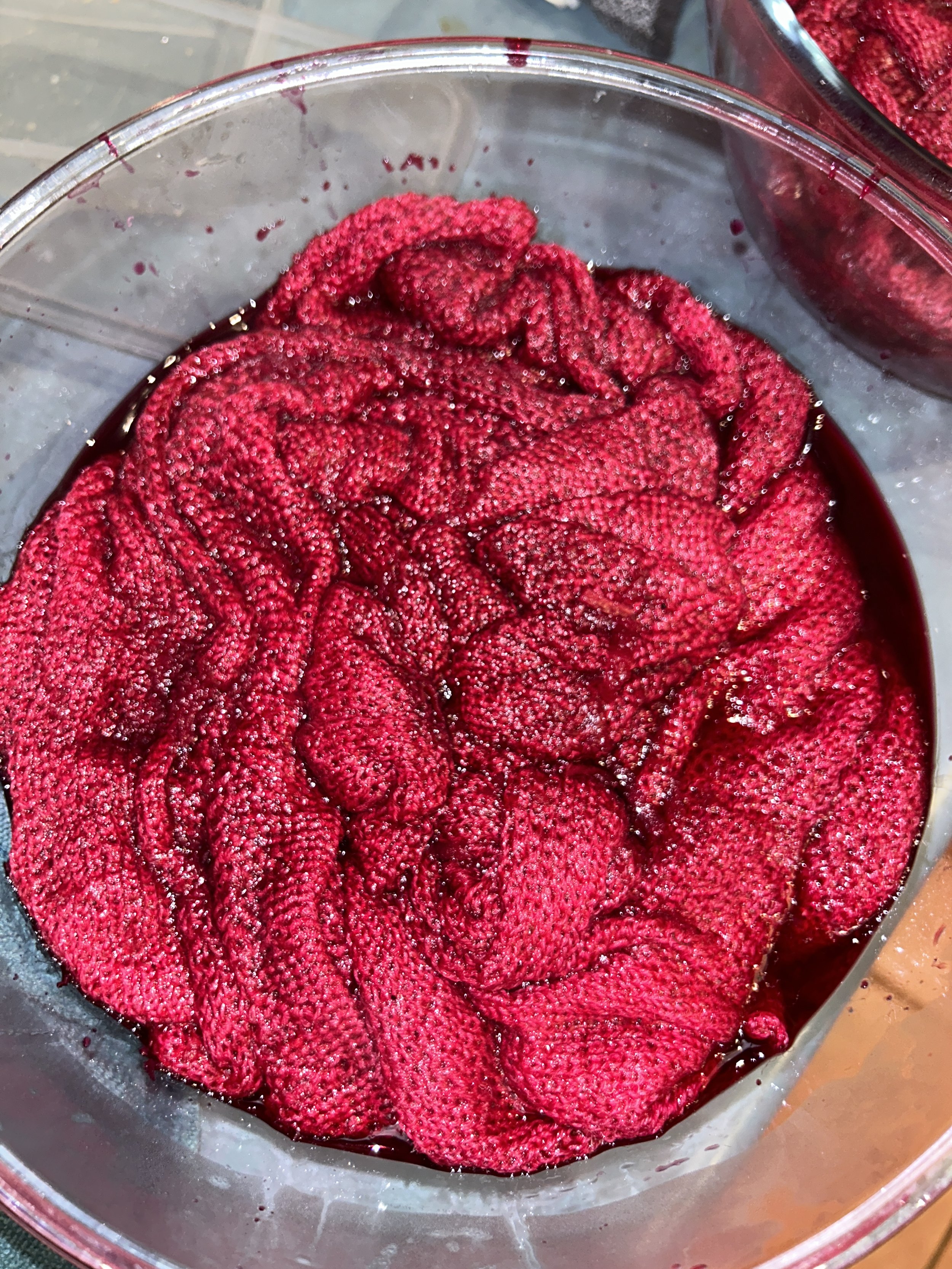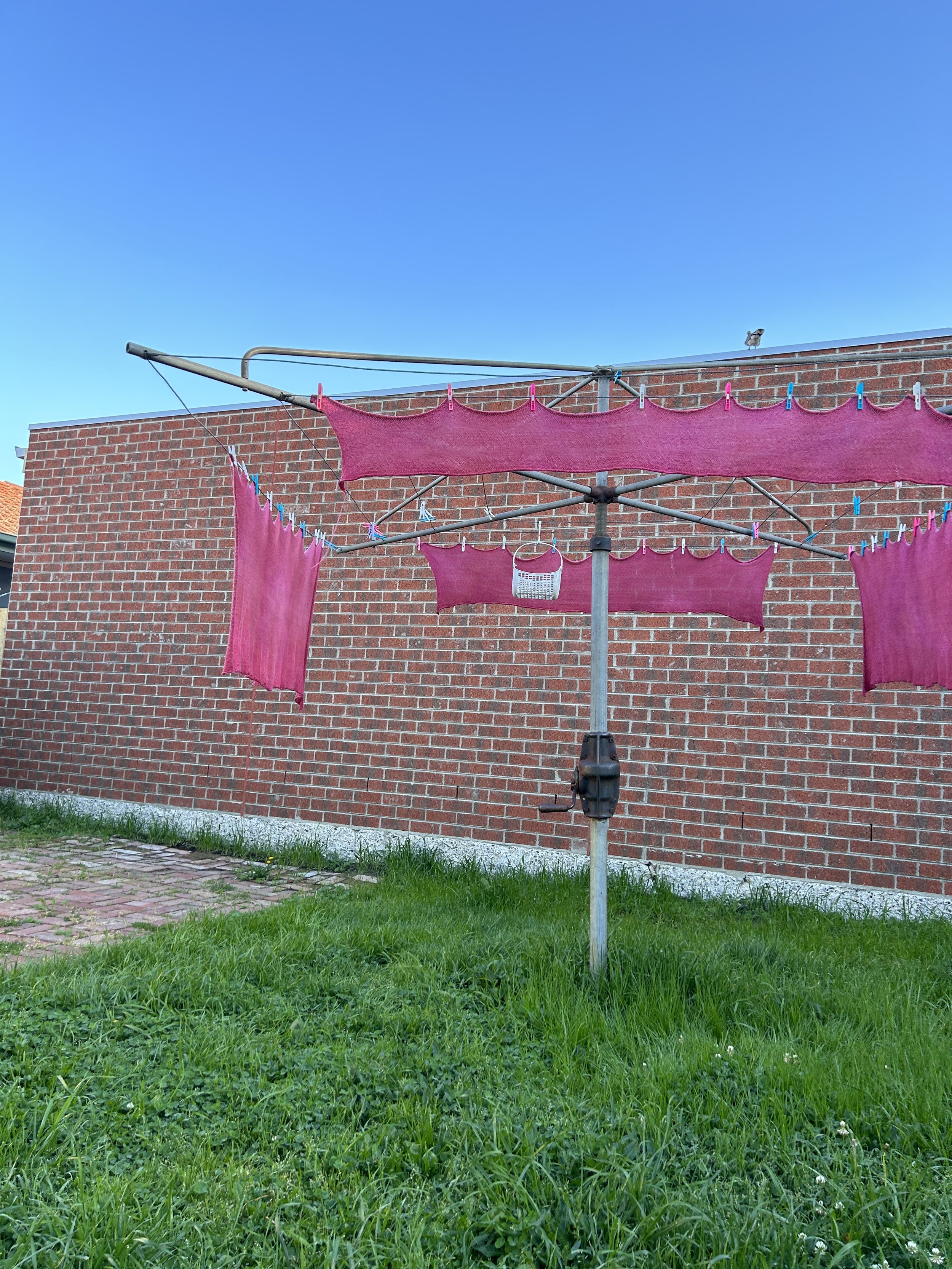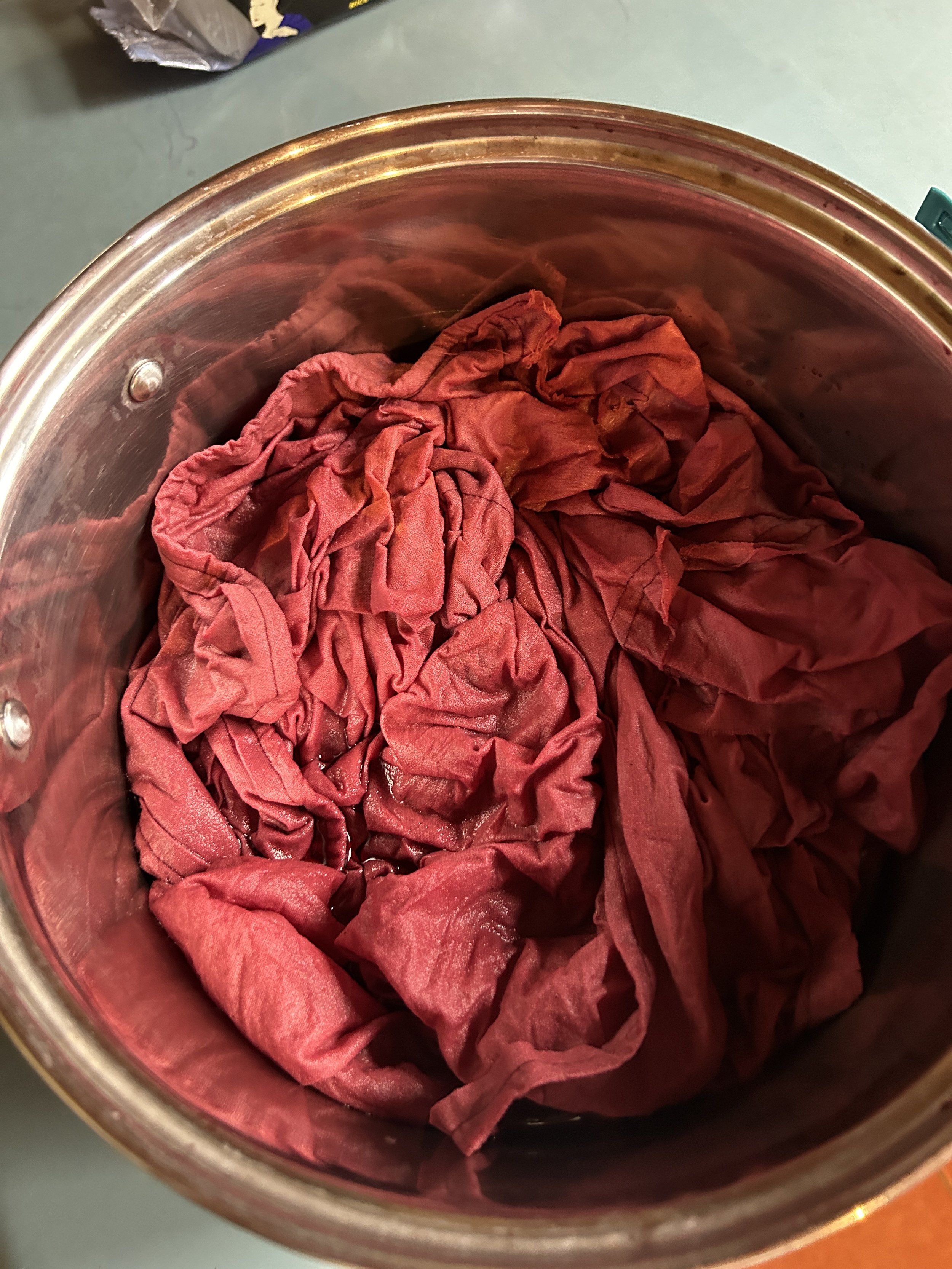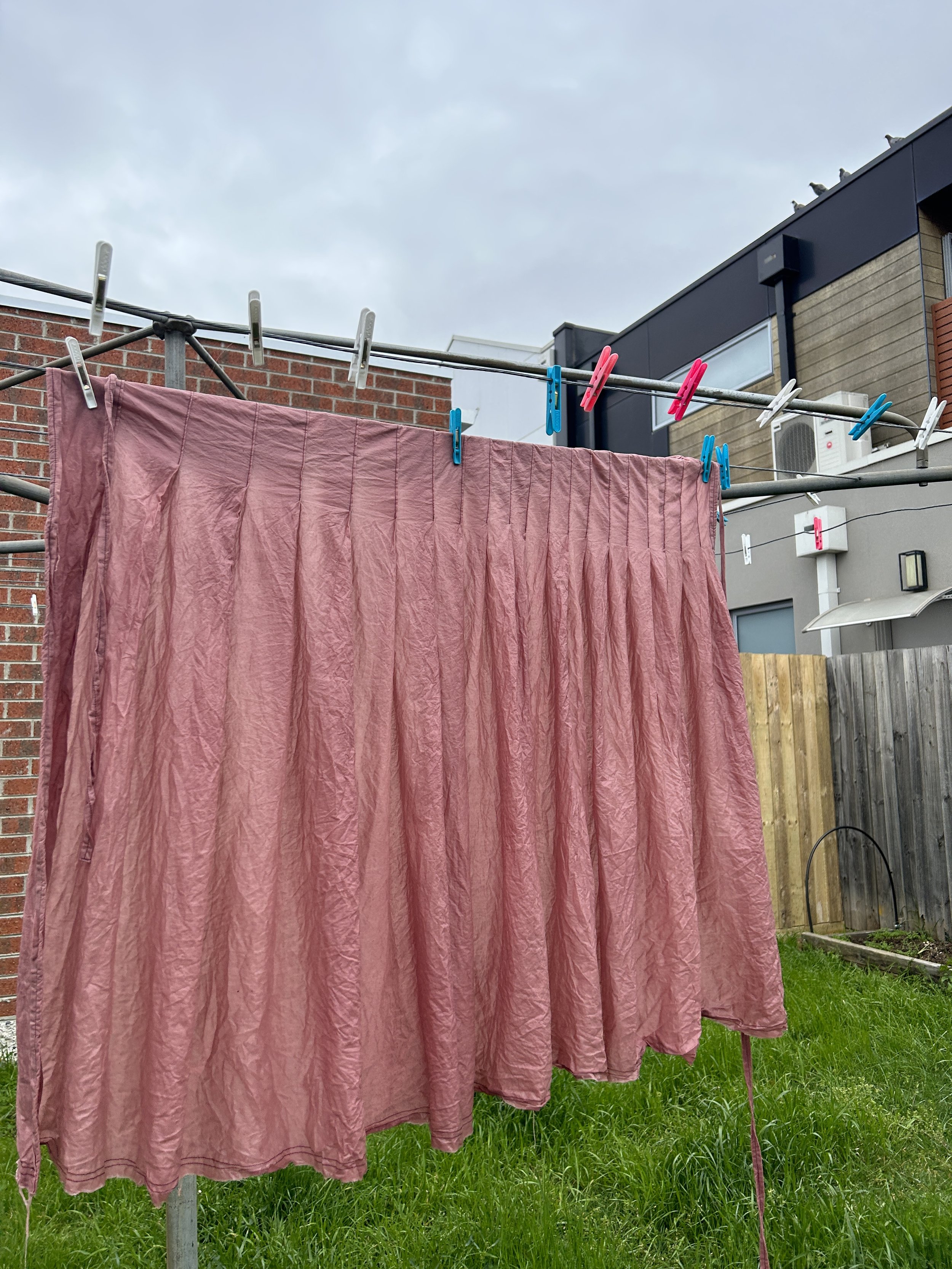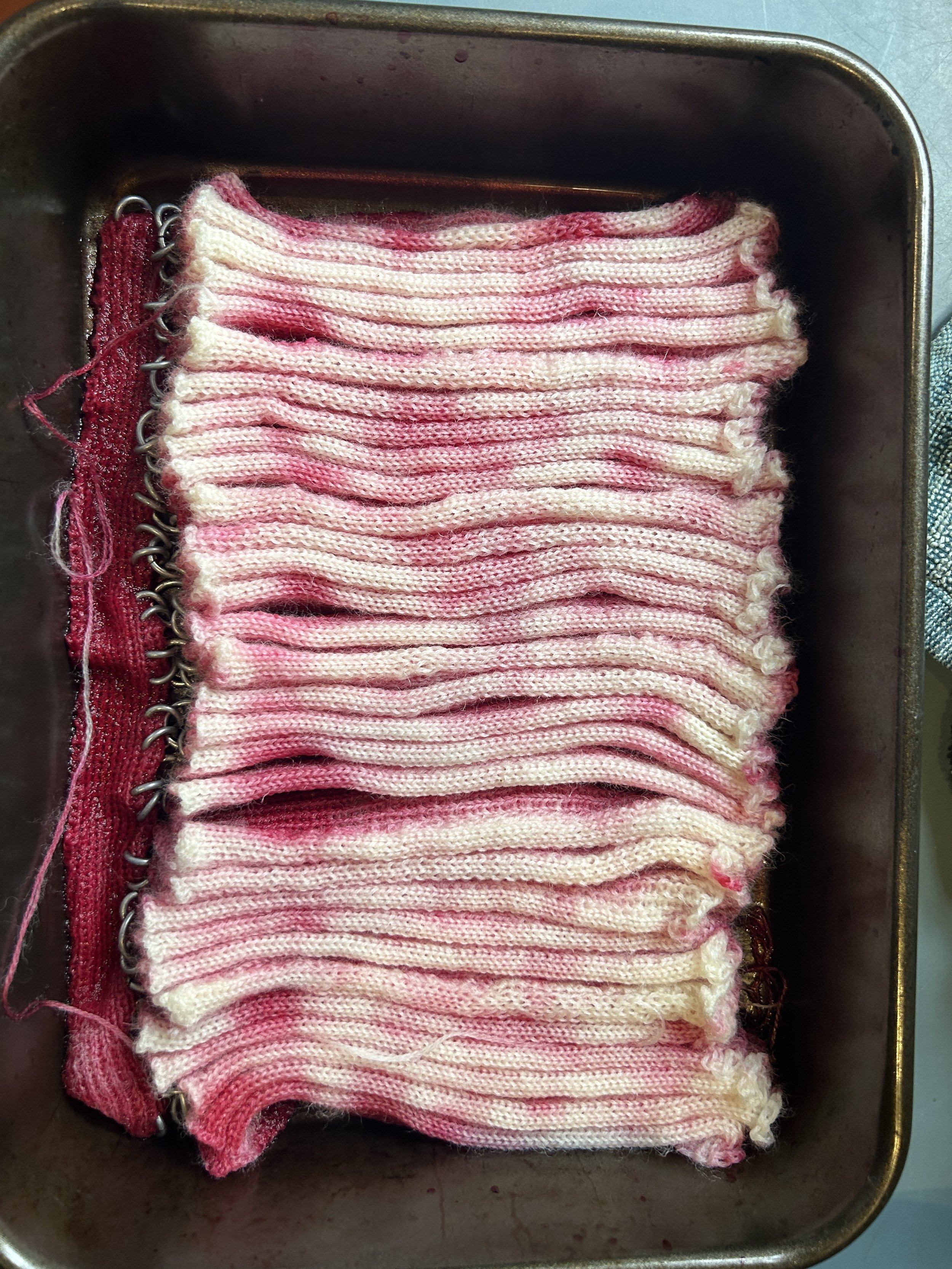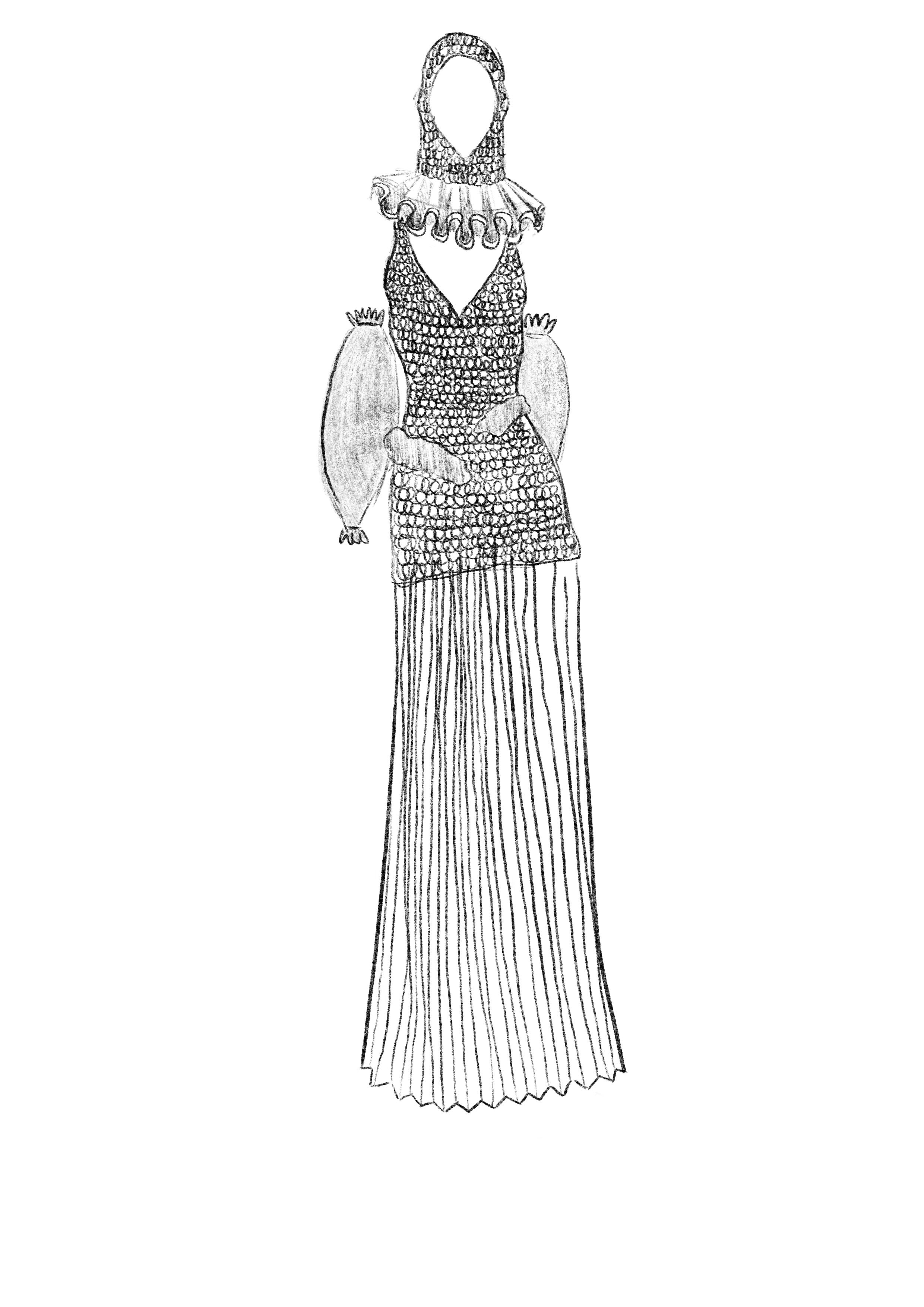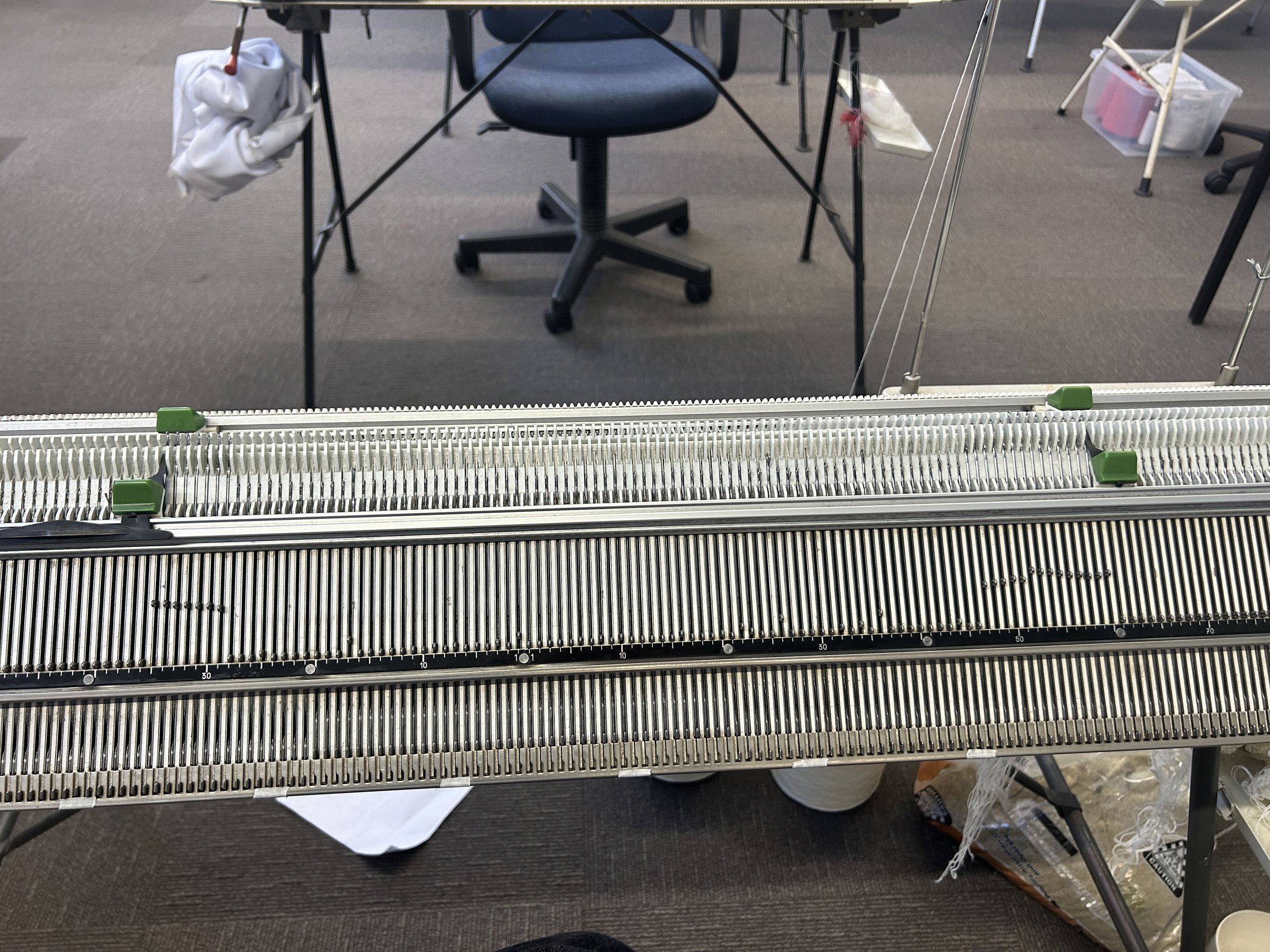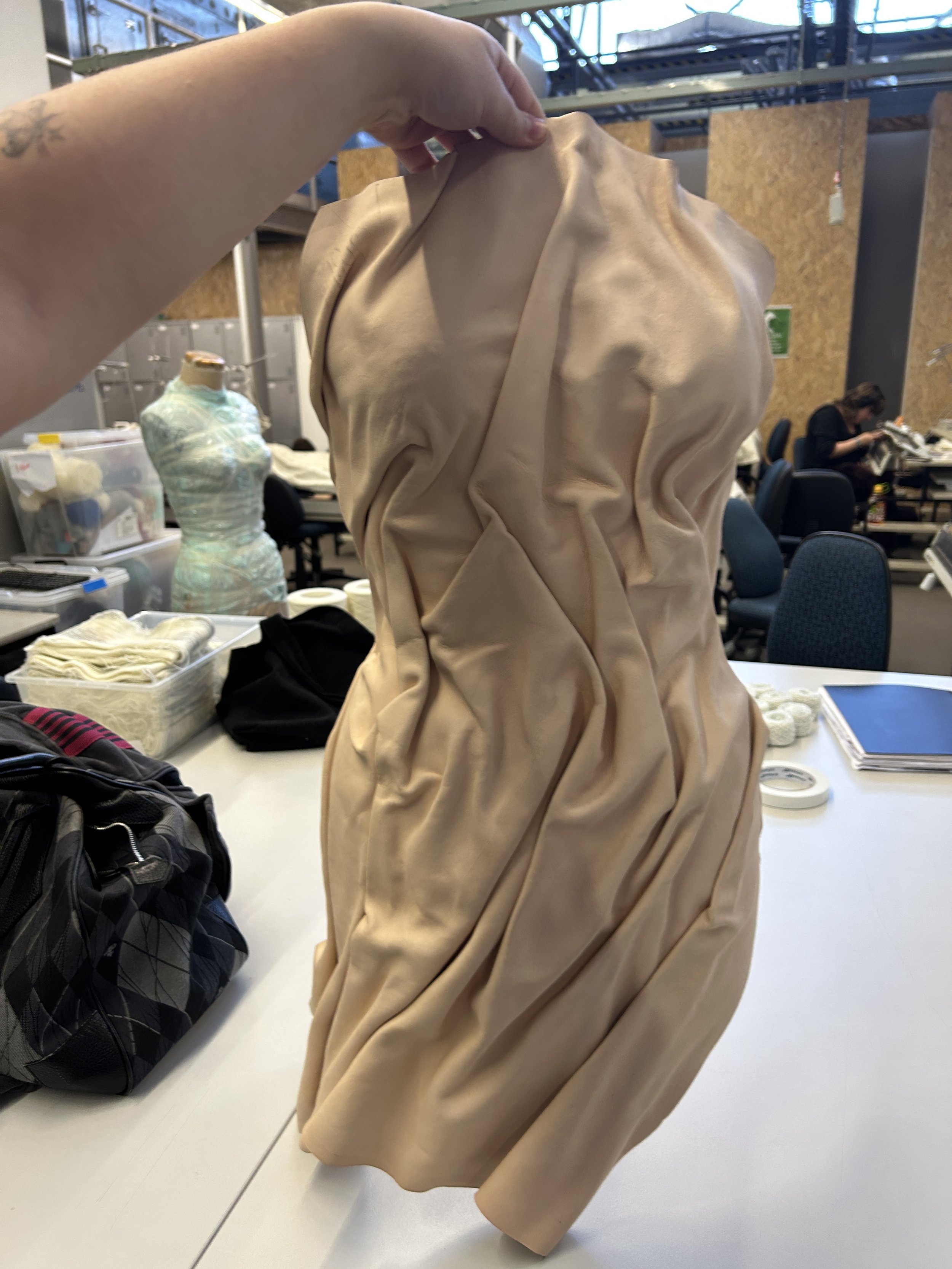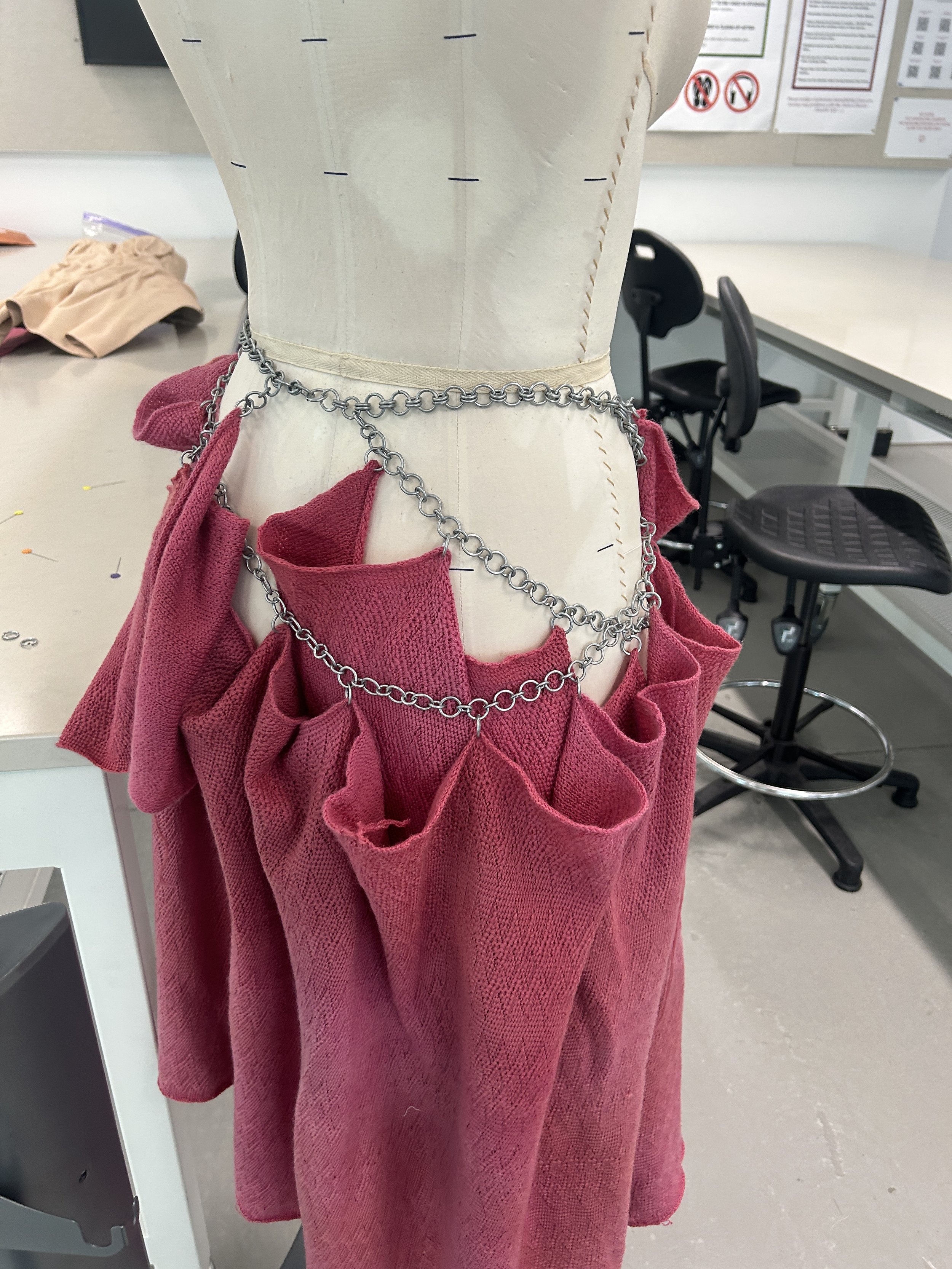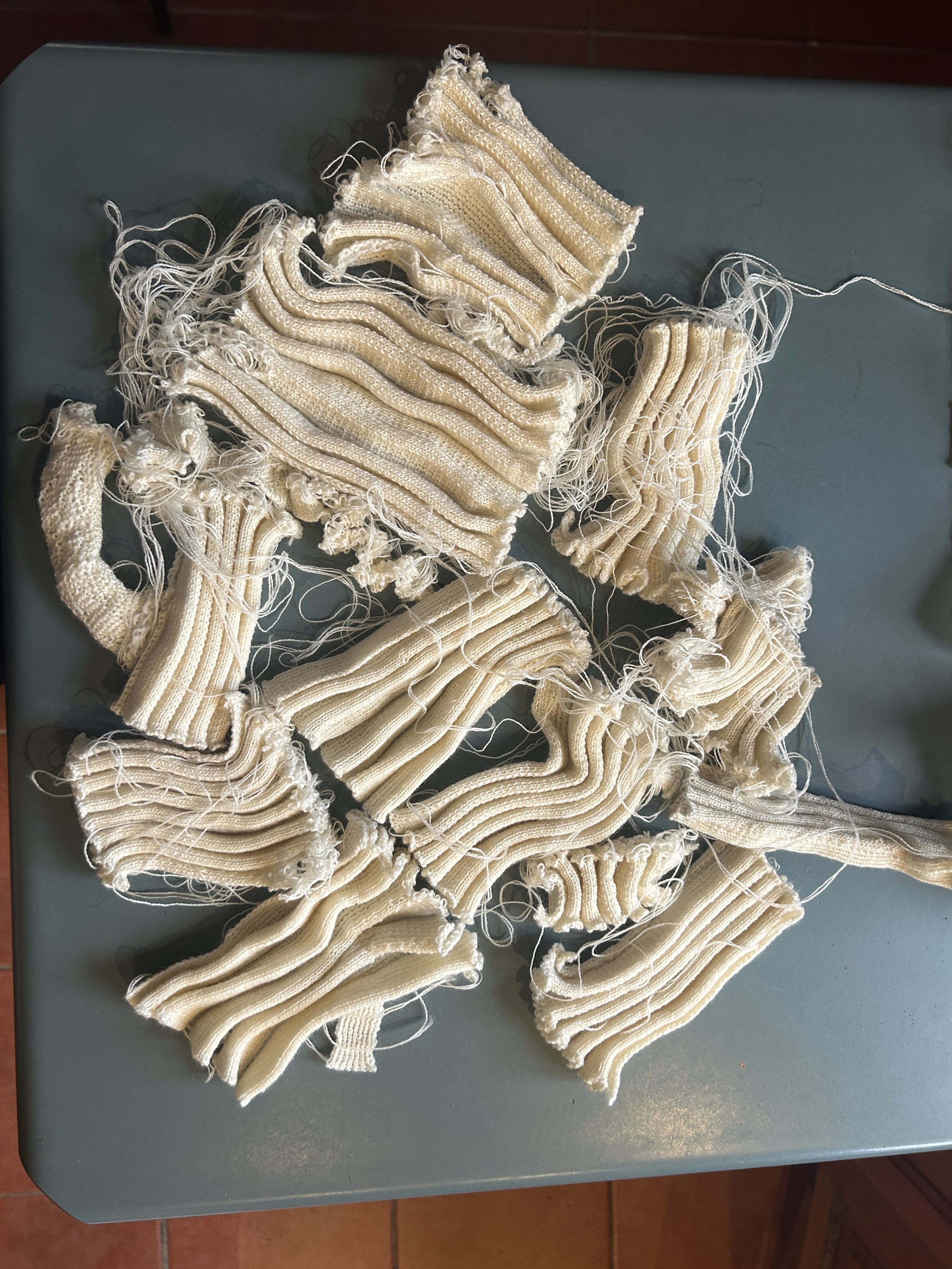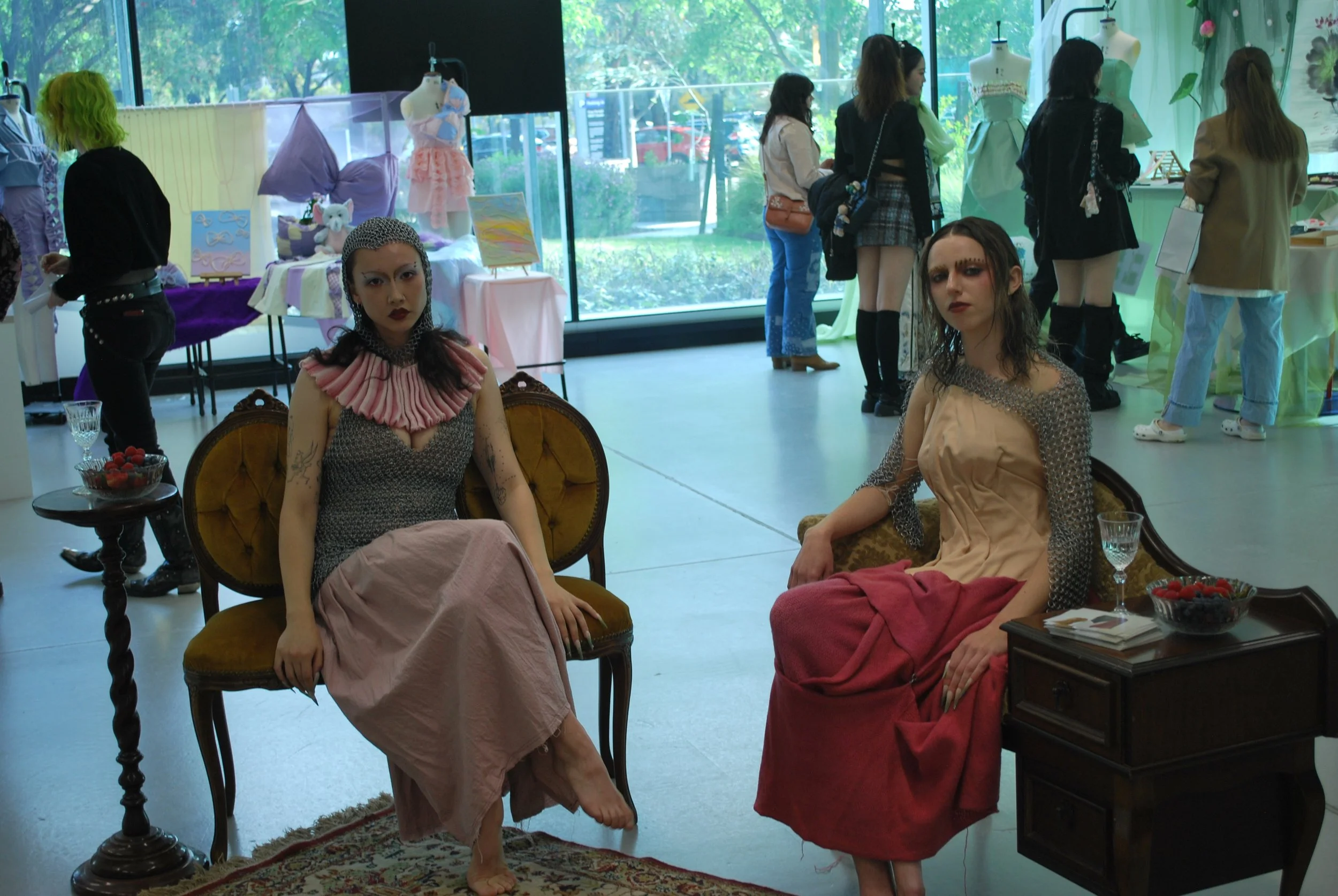
Beheading Holofernes
Choosing historical methods of textile manipulation and raw, unadulterated materials has allowed me to delve into the rich tapestry of history and explore the significance of feminism in a modern context. By incorporating these traditional techniques and materials, I can breathe new life into the past, while highlighting the enduring power and relevance of women's experiences.
The use of steel, leather, unbleached cotton, and wool serves as a tangible connection to the resilience and strength of women throughout history. These materials have stood the test of time, just as women have persevered against societal norms and restrictions placed upon them. Through the revitalisation of historical methods such as vegetable-based dyeing, chain-mail fabrication, knitting, pleating, and leather wet-forming, I can pay homage to the craftsmanship of our ancestors while reimagining their work in a contemporary context.
Each stitch, fold, and dye becomes a visual narrative that seeks to amplify the voices of women in the present and the past. By intertwining these old-world techniques with a modern sensibility, I have been able to create pieces that not only capture the eye but also provoke thought and spark conversations about gender dynamics in society.
Through the experience of creating clothing from scratch with highly labour intensive and hands on techniques, I was able to intertwine my own feminine power in my ability to connect with my own creations. The strength that comes to someone when crafting their own clothes and wares in innate and undeniable. Having the power to be able to reclaim “womanly craft” as a symbol of strength and skill rather than a lack thereof, is something that should be shared.
Created for Textile Design Project Launch, as part of my Bachelor of Design (Textiles) at RMIT
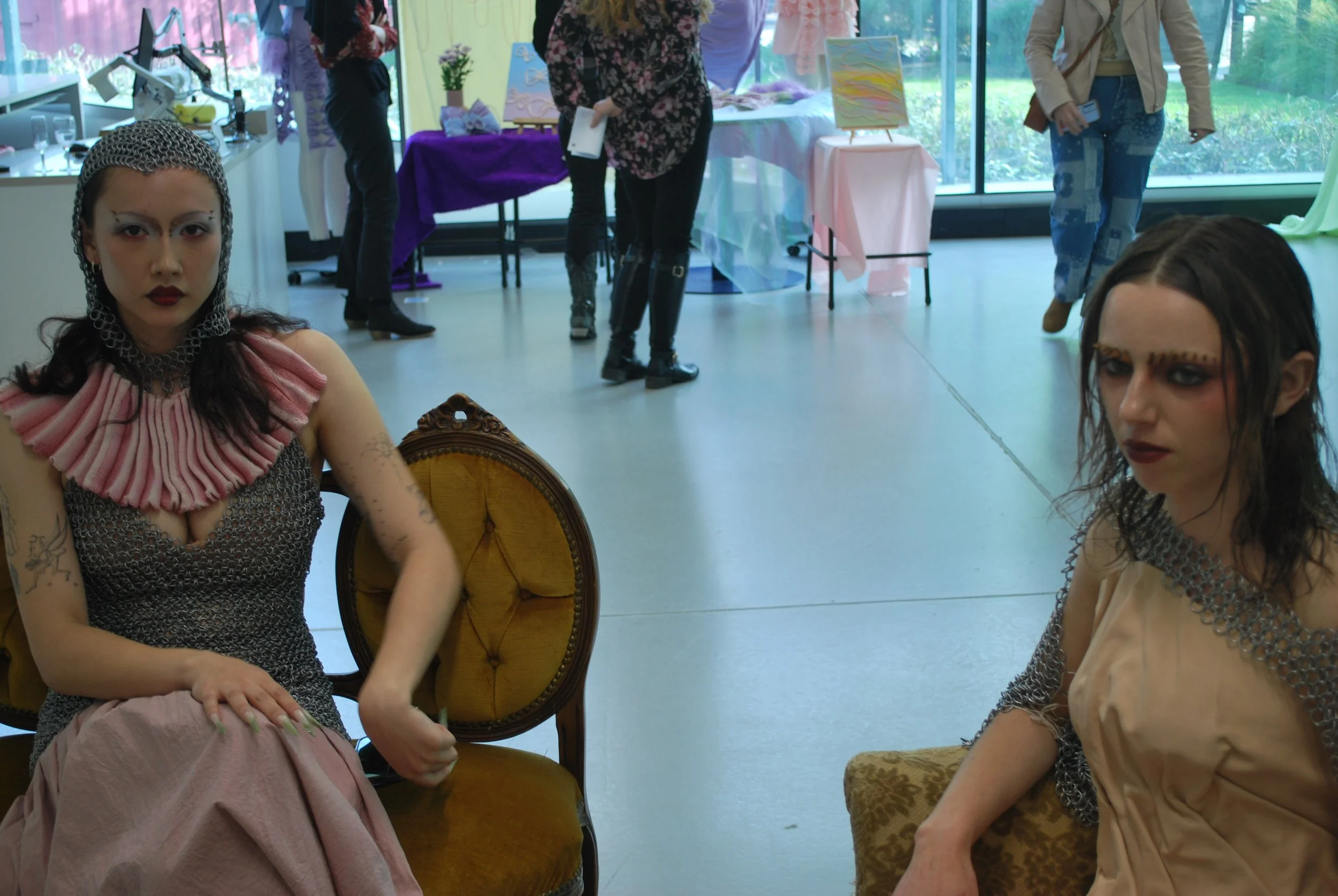
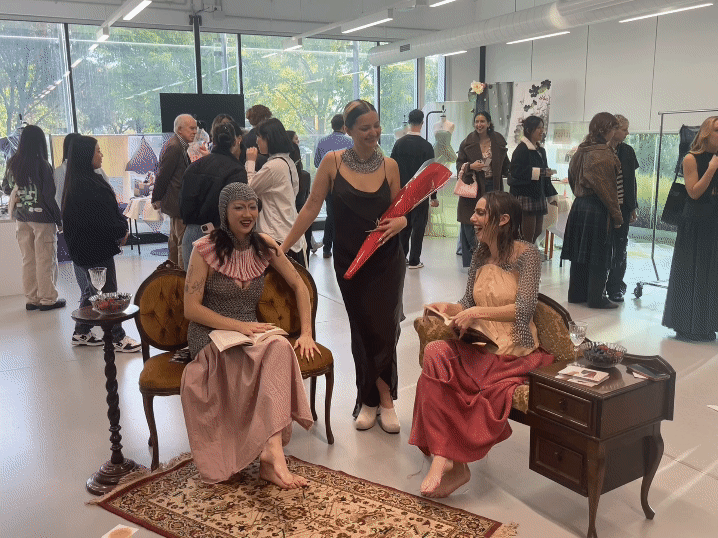
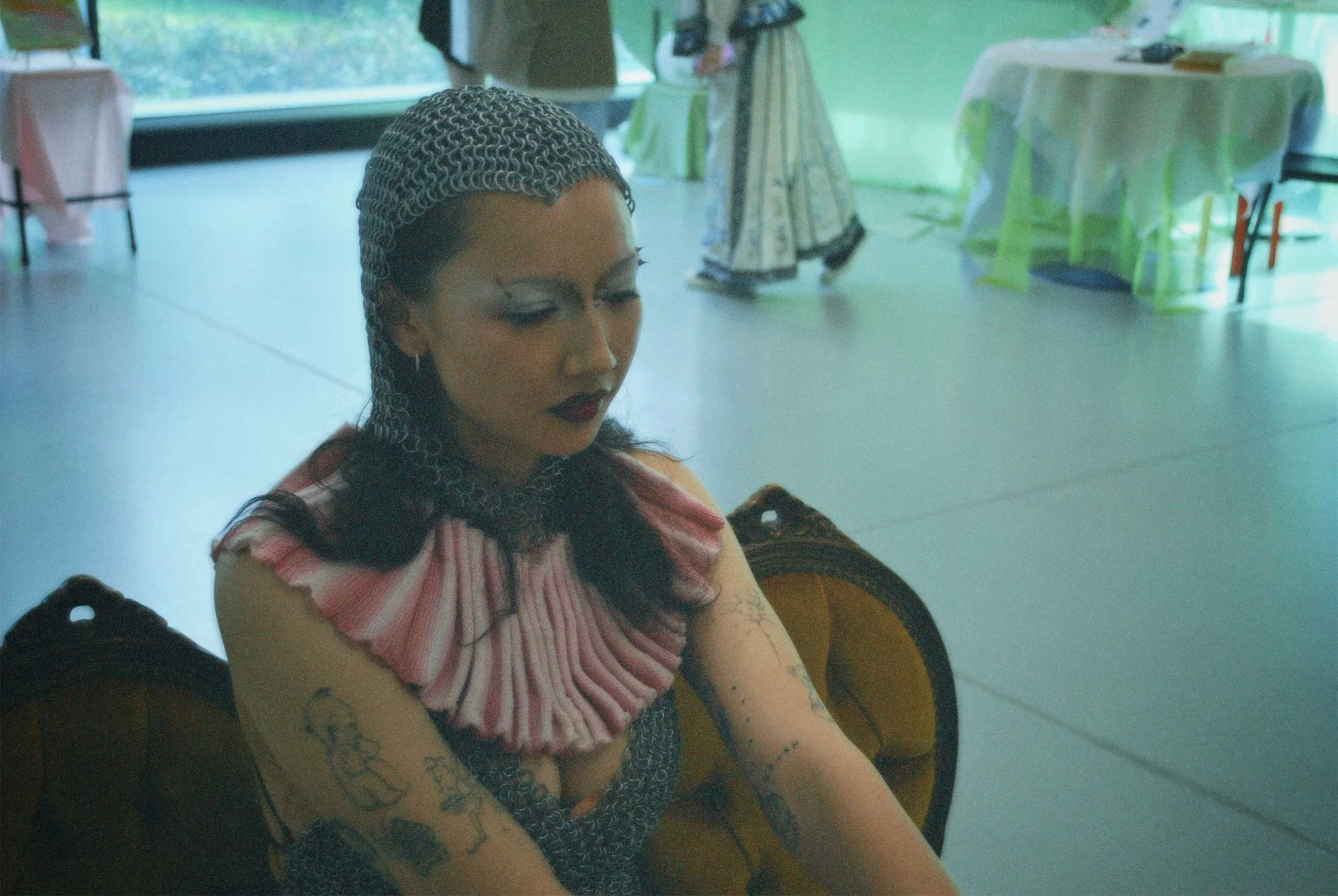
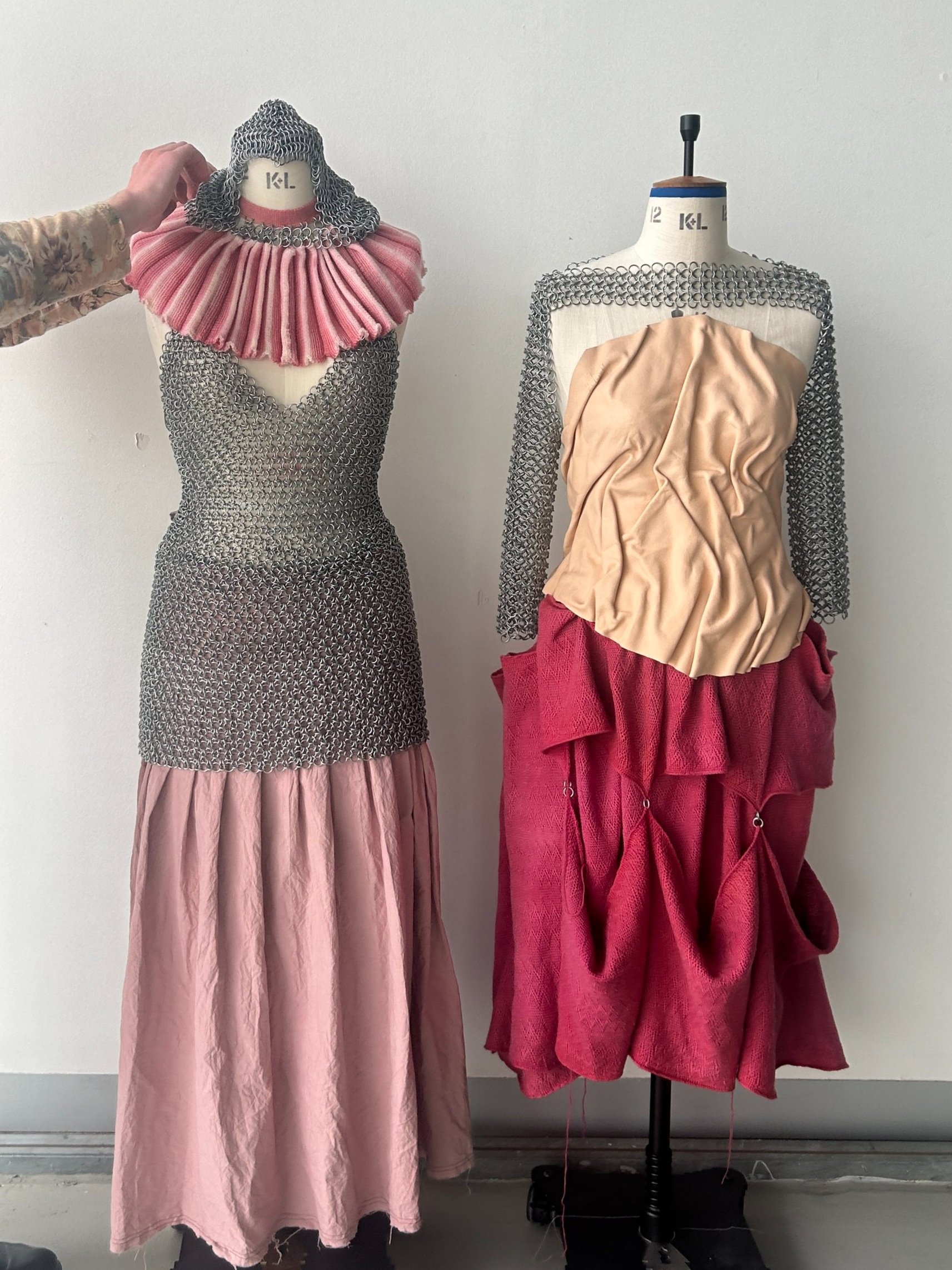
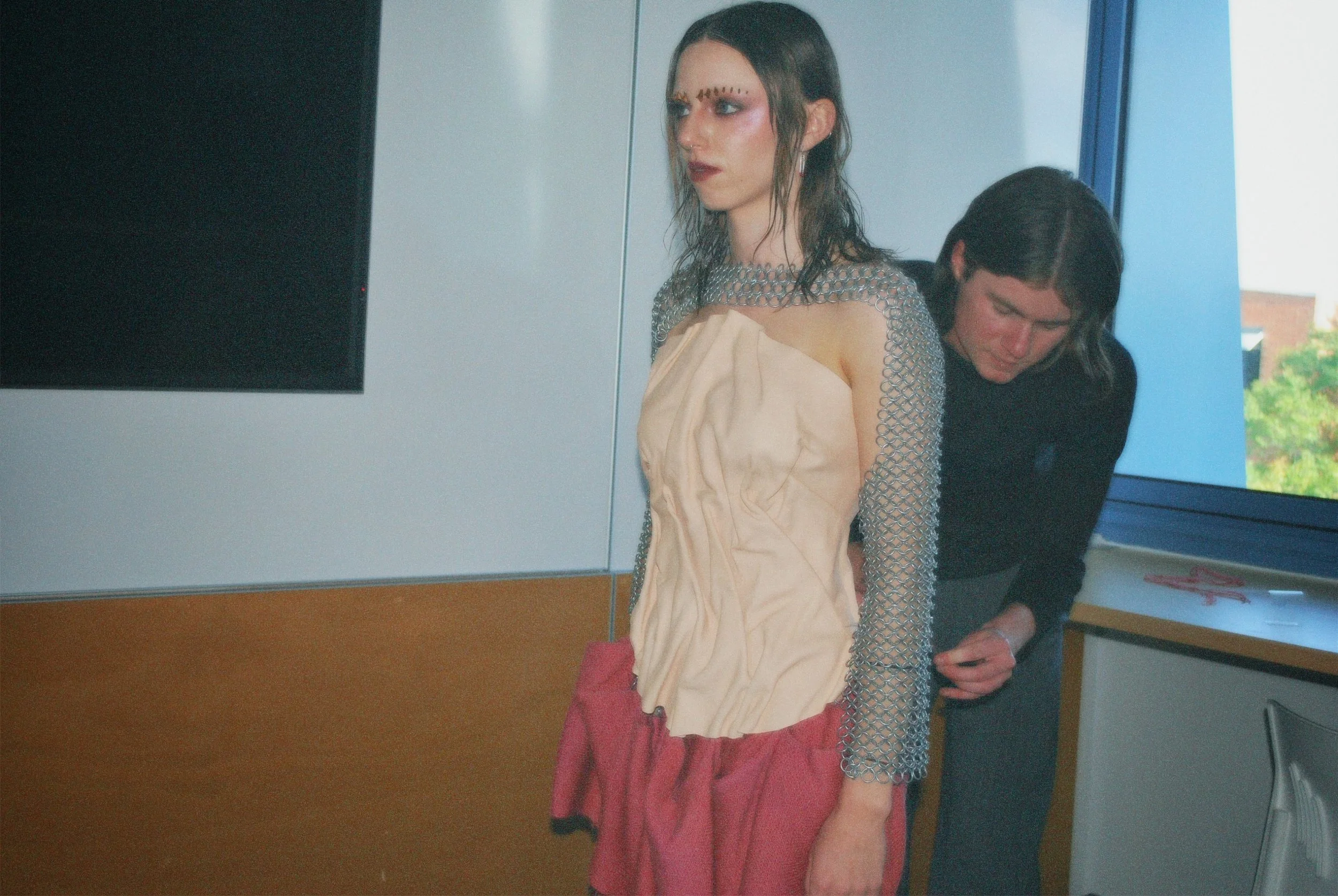
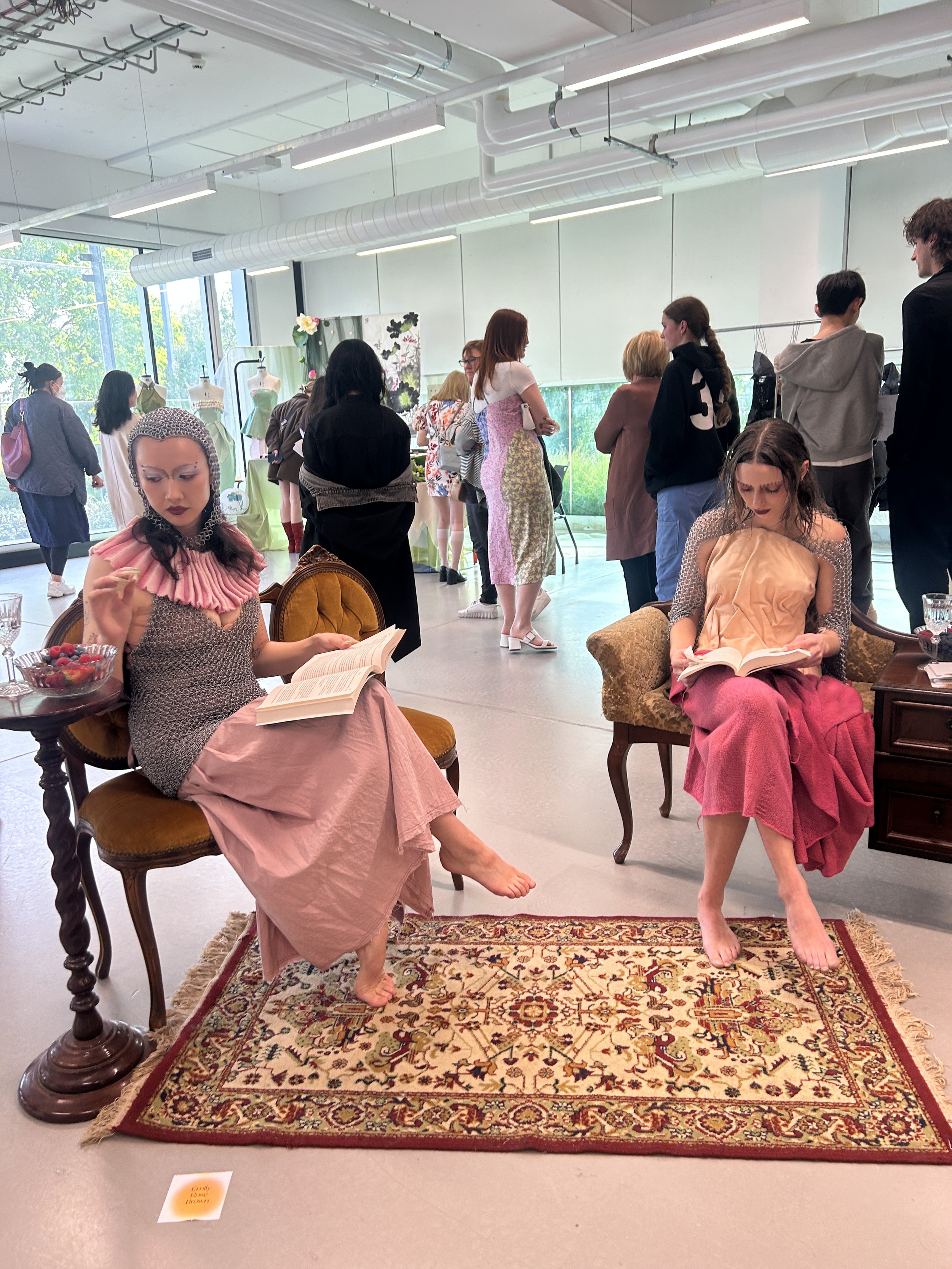
When making my graduate collection I decided to develop my “Judith beheading Holofernes” by Gentileschi inspired concept from my Persona Project course further, developing the idea and expanding it over many decades with a heavier handed focus on historical making and techniques. I also had to deeply consider how I wanted to present my collection as part of the Graduate exhibition, in line with my intentions of showing women’s strength and voice, I chose to have live models throughout the show. The models were invited to talk, read, text, and drink, implying that women can bring more to fashion than just a body in which pieces hang.
In total I made seven pieces, each entirely unique in its construction.
Piece One: Coif, using traditional European chainmail techniques and jump rings I made with the assistance of the techs in the Makers space.
Piece Two: Ruff, knitted with a double bed machine, 100% Aussie wool, jump rings, as well as home-made beetroot dye.
Piece Three: Bolero, utilising the biggest of the rings I made I once again used European chainmail to construct.
Piece Four: Mini dress, a slinky silhouette paired with Japanese 6x1 chainmail and leather corset back.
Piece Five: Corset, using wet-molded leather I was able to replicate the elegance of a marble statue on the body.
Piece Six: Knitted skirt, made with four separate knitted panels, that I dyed with beetroots and joined with chain
Piece Seven: Wrap skirt, a simple pleated skirt that is fixed with ties and dyed with shiraz wine.
Scroll through the images below to see each piece in detail
